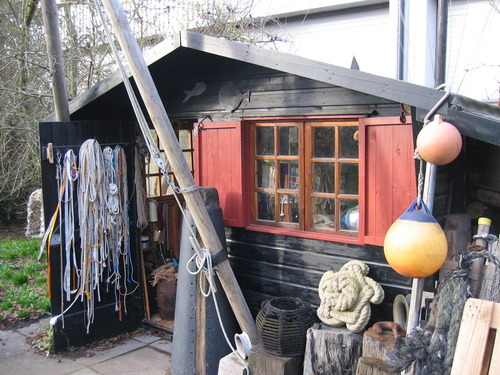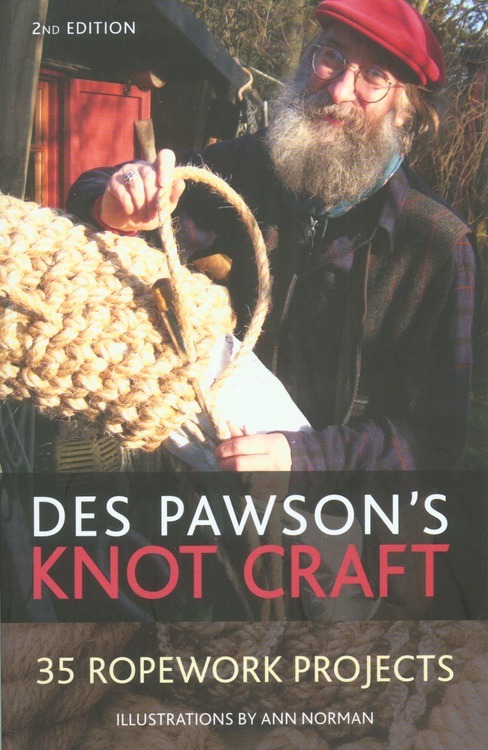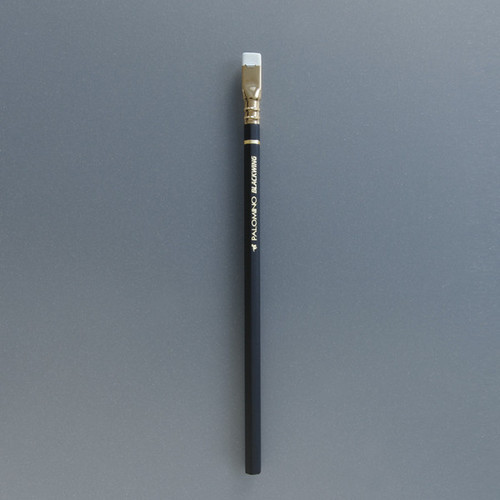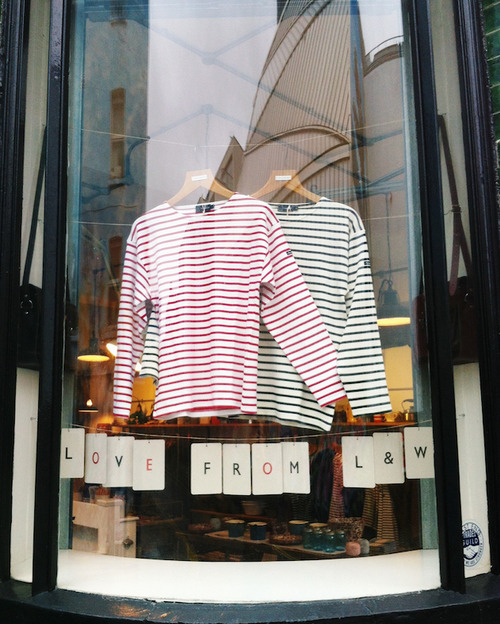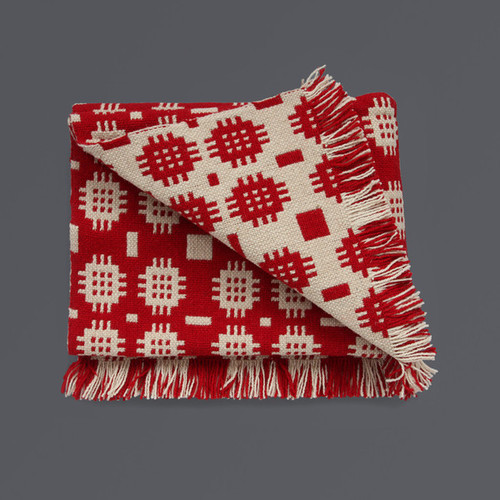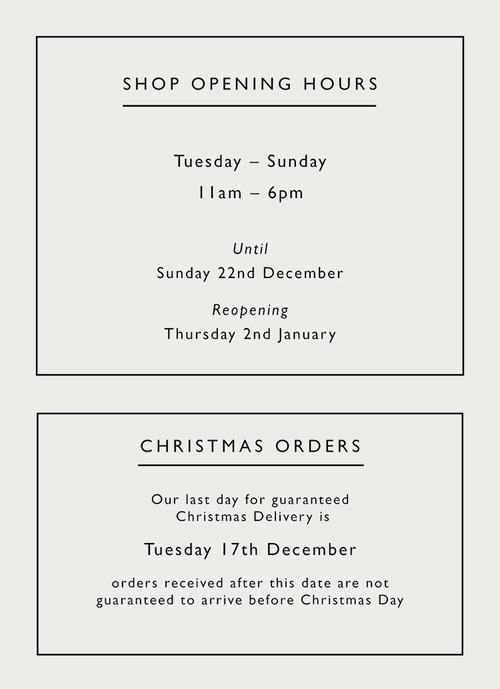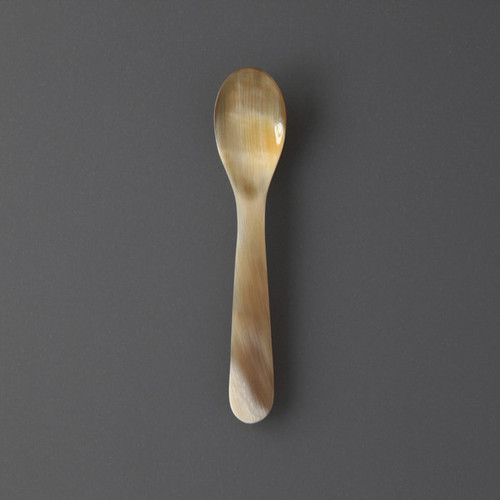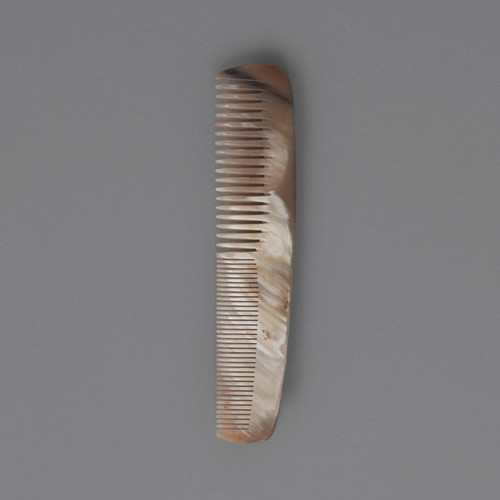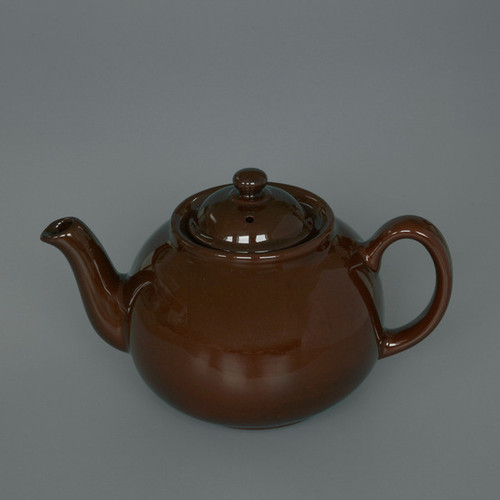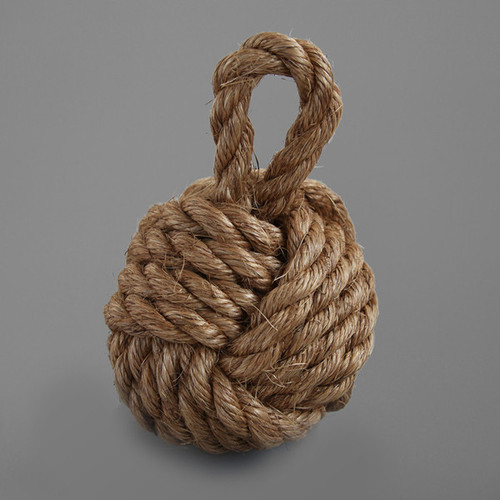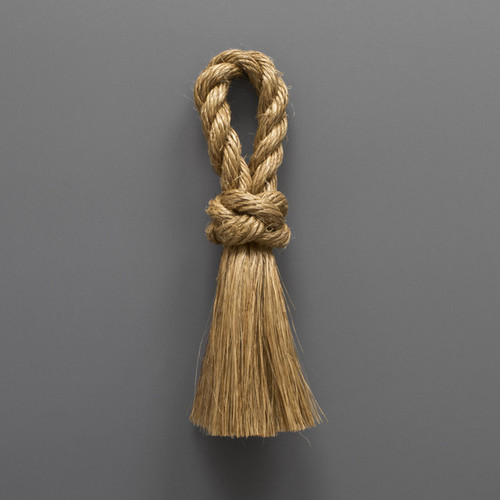The combination of the Rockingham glaze and the red clay was and still is fundamental to the success of the Brown Betty, prolonging the life of the object for its owner and, subsequently, through history. The Staffordshire clay used to make a Brown Betty was first refined in 1693 by Dutch brothers John Philip Elers and David Elers. The brothers emulated the fashionable and expensive Yixing teapots which had originally been imported from China by the Dutch East India Company. The refinement of the local red clay gave rise to a new era of technological experiment in Staffordshire, becoming a catalyst for the industrialisation of the six towns that now make up Stoke-on-Trent.
The Staffordshire clay used to make a Brown Betty was first refined in 1693 by Dutch brothers John Philip Elers and David Elers. The brothers emulated the fashionable and expensive Yixing teapots which had originally been imported from China by the Dutch East India Company. The refinement of the local red clay gave rise to a new era of technological experiment in Staffordshire, becoming a catalyst for the industrialisation of the six towns that now make up Stoke-on-Trent.
The process of design of the Brown Betty spans centuries. There is no single identifiable author and no single definitive version of the pot: it is an anonymous and evolved object. Over the years, Brown Betty has been through the hands of numerous makers, each producing their own interpretation, subtly refining and amalgamating new and original design details. The resulting teapot is a rational object stripped of anything superfluous to its function or production.
 Although there is no definitive version, the manufacturers Alcock, Lindley and Bloore were responsible for cementing the archetypal features of the pot as we know them today. Some of the most recognisable features of the Brown Betty were combined during their production: the globe shape of their pot that is so efficient at infusing loose leaf tea, the roughly cut spout that breaks the flow of water, preventing tea from dribbling back down the outside of the pot, and the Rockingham glaze that concealed any dribbles that did, despite efforts, escape.
Although there is no definitive version, the manufacturers Alcock, Lindley and Bloore were responsible for cementing the archetypal features of the pot as we know them today. Some of the most recognisable features of the Brown Betty were combined during their production: the globe shape of their pot that is so efficient at infusing loose leaf tea, the roughly cut spout that breaks the flow of water, preventing tea from dribbling back down the outside of the pot, and the Rockingham glaze that concealed any dribbles that did, despite efforts, escape.
Brown Betty describes a type of teapot with common characteristics of red Etruria Marl clay, a transparent or dark brown Rockingham glaze and a familiar portly body. The ritual of tea drinking has remained largely unchanged for centuries. All over the world people choose a teapot as their preferred apparatus and the humble Brown Betty is often heralded as the archetypal example.
 The popularity of the pot is proven in the quantity in which it has been made. By 1926 the Staffordshire pottery industry was making approximately half a million Brown Betty teapots a week. Despite this, surprisingly little is known about the object itself or its early history and design development. This affordable, utilitarian and unpretentious object has largely gone unnoticed, disappearing into the fabric of everyday life.
The popularity of the pot is proven in the quantity in which it has been made. By 1926 the Staffordshire pottery industry was making approximately half a million Brown Betty teapots a week. Despite this, surprisingly little is known about the object itself or its early history and design development. This affordable, utilitarian and unpretentious object has largely gone unnoticed, disappearing into the fabric of everyday life.
 The Japanese jug demonstrates the preference for a matt surface glaze. It has no handle- it is simply grasped. Though not actually hand thrown, this jug clearly has many attributes of a craft object. Paradoxically, the British ‘Denby' jug is in fact handmade, but strives to achieve the uniformity of mass production.
The Japanese jug demonstrates the preference for a matt surface glaze. It has no handle- it is simply grasped. Though not actually hand thrown, this jug clearly has many attributes of a craft object. Paradoxically, the British ‘Denby' jug is in fact handmade, but strives to achieve the uniformity of mass production.
![]() For London Design Festival 2018, Labour and Wait is excited to present the Re-engineered Brown Betty Teapot. The new teapot is the result of a three year research and development project by ceramic designer Ian McIntyre.
For London Design Festival 2018, Labour and Wait is excited to present the Re-engineered Brown Betty Teapot. The new teapot is the result of a three year research and development project by ceramic designer Ian McIntyre.
Ian has worked closely with Cauldon Ceramics of Staffordshire, the oldest remaining maker of the traditional Brown Betty teapot, to bring his vision to life. New production processes have been implemented and past innovations such as the ‘locking lid’, and ‘non-drip spout’ have been reintroduced.
The teapot incorporates a removable metal strainer for loose-leaf tea, whilst subtle adjustments to the foot and neck, enable the teapots to be stacked efficiently in the factory and subsequently in cafes and restaurants.
This re-engineered teapot retains the best features from the classic Brown Betty, and by virtue of its refinements, brings this everyday archetype up to a new standard of discreet functionalism.
The new teapot will be available for purchase in the shop from Saturday 15th September, and online later this Autumn.
London Design Festival runs from Saturday the 15th, until Sunday the 23rd of September. Ian will be on hand throughout Thursday 20th September, should you wish to meet the maker and discuss his creation.
Teapot image by Milo Reid
 A balloon whisk in stainless steel contrasts with the exquisite delicacy of a Japanese tea whisk. The Japanese ‘Chasen’ is used to mix green matcha powder with hot water, and is an essential element of the traditional tea ceremony. The ubiquitous Western balloon whisk does not carry connotations of refinement and formality.
A balloon whisk in stainless steel contrasts with the exquisite delicacy of a Japanese tea whisk. The Japanese ‘Chasen’ is used to mix green matcha powder with hot water, and is an essential element of the traditional tea ceremony. The ubiquitous Western balloon whisk does not carry connotations of refinement and formality.
 Two traditional lunch boxes. The marbled enamel example is from France, where lunch boxes of this type were used by labourers and schoolchildren alike. The interior reveals a small, lift out tray for bread. The circular box in Japanese cedar likewise has a removable inner tray. Its smooth flawless finish makes it a joy to handle.
Two traditional lunch boxes. The marbled enamel example is from France, where lunch boxes of this type were used by labourers and schoolchildren alike. The interior reveals a small, lift out tray for bread. The circular box in Japanese cedar likewise has a removable inner tray. Its smooth flawless finish makes it a joy to handle.
 This simple Japanese ‘Yunomi’ is an everyday cup for tea drinking. Sensibilities towards crockery can differ between East and West. The Western ceramic traditions tends to favour smooth, shiny surfaces. In Japan, uneven, often matt textured surfaces are not uncommon. The classic British ‘Berylware’ cup and saucer reminds us of summer fetes and vicarage tea parties!
This simple Japanese ‘Yunomi’ is an everyday cup for tea drinking. Sensibilities towards crockery can differ between East and West. The Western ceramic traditions tends to favour smooth, shiny surfaces. In Japan, uneven, often matt textured surfaces are not uncommon. The classic British ‘Berylware’ cup and saucer reminds us of summer fetes and vicarage tea parties!
 These paintbrushes, though superficially similar, are constructed in quite different ways. Is it just familiarity with the Western example that makes the Japanese brush so interesting? The single piece handle divides to grip the bristles tightly and has an undeniably Eastern line.
These paintbrushes, though superficially similar, are constructed in quite different ways. Is it just familiarity with the Western example that makes the Japanese brush so interesting? The single piece handle divides to grip the bristles tightly and has an undeniably Eastern line.
 The ‘Tawashi’ scourer is made from Hemp Palm fibres bundled together around a wire core. Highly tactile objects, these scourers are still commonly used in Japan. In Western kitchens, the knitted, metallic scourer is a more familiar sight. Seen here out of context, each scourer assumes characteristics of a surrealist art object.
The ‘Tawashi’ scourer is made from Hemp Palm fibres bundled together around a wire core. Highly tactile objects, these scourers are still commonly used in Japan. In Western kitchens, the knitted, metallic scourer is a more familiar sight. Seen here out of context, each scourer assumes characteristics of a surrealist art object.
 These two caddies are similar in form, but on different scales. Since the 1930s, Cornishware has been instantly recognisable in Britain, with its coloured stripes evoking the sea and skies of Cornwall. The size of this caddy makes it a perfect container for tea bags. Meanwhile, the traditional Japanese example is used for loose tea. It is handmade from raw tin and is intended to develop a weathered patina with use. Also shown is the copper scoop, which normally lives inside the caddy.
These two caddies are similar in form, but on different scales. Since the 1930s, Cornishware has been instantly recognisable in Britain, with its coloured stripes evoking the sea and skies of Cornwall. The size of this caddy makes it a perfect container for tea bags. Meanwhile, the traditional Japanese example is used for loose tea. It is handmade from raw tin and is intended to develop a weathered patina with use. Also shown is the copper scoop, which normally lives inside the caddy.
Introducing the E2 jean, exclusive to Labour and Wait.
Specified by us and manufactured in Walthamstow, London, these jeans are cut in a relaxed heritage fit, with a straight leg.
They are made from 14.5oz selvedge denim, with great attention paid to the detailing and construction. This includes hidden rivets, a reinforced back pocket and a patch made from our iconic canvas apron fabric.
Our jean is suitable for both men and women.
 Here we find two opposite approaches: The Japanese saw cuts on the pull stroke whereas the traditional Western saw cuts as you push. The different methods have evolved because of the types of wood they were required to cut. The refined Japanese saw works well on a soft wood like cedar; the more robust European saw tackles harder woods such as oak.
Here we find two opposite approaches: The Japanese saw cuts on the pull stroke whereas the traditional Western saw cuts as you push. The different methods have evolved because of the types of wood they were required to cut. The refined Japanese saw works well on a soft wood like cedar; the more robust European saw tackles harder woods such as oak.
 Tea is considered a national drink in both Japan and Britain. The aesthetic of both teapots is redolent of their culture. The traditional Brown Betty is a common sight on many British breakfast tables. This classic round teapot, made from the red clay found in Staffordshire, is considered the ideal shape for producing the perfect cuppa. In Japan, the iron ‘Tetsubin’ teapot is favoured for both heating and brewing, partly because the iron changes the taste of the water, making the tea mellow and sweet.
Tea is considered a national drink in both Japan and Britain. The aesthetic of both teapots is redolent of their culture. The traditional Brown Betty is a common sight on many British breakfast tables. This classic round teapot, made from the red clay found in Staffordshire, is considered the ideal shape for producing the perfect cuppa. In Japan, the iron ‘Tetsubin’ teapot is favoured for both heating and brewing, partly because the iron changes the taste of the water, making the tea mellow and sweet.
 Now that our 2018 Calendar is sold out, we will be sharing each monthly image on our blog throughout the year.
Now that our 2018 Calendar is sold out, we will be sharing each monthly image on our blog throughout the year.
For this calendar we are comparing domestic items from the Eastern and Western worlds. Whenever we visit Japan, we are fascinated by the way in which our different cultures approach similar tasks, and the way in which generic products have evolved in consequence. Our choice of calendar subjects is unashamedly esoteric, but we hope you will enjoy a very personal appreciation of the singularities of East and West.
 How long is a piece of string? An essential item, no home can function without at least one ball of string. There is an abundance of different types of string for numerous domestic chores and we love them all! A beautifully wound ball or spool is a sight to behold and who can resist brown paper packages tied up with string?
How long is a piece of string? An essential item, no home can function without at least one ball of string. There is an abundance of different types of string for numerous domestic chores and we love them all! A beautifully wound ball or spool is a sight to behold and who can resist brown paper packages tied up with string?
 How can we extol the virtues of the lowly bucket? This basic vessel is found in every culture and is indispensible. The bucket is a perfect form, which has evolved over the centuries and cannot be improved. Early buckets were made from wood or leather. So long as it remains watertight a bucket is the go-to object in many an emergency. We speak from experience!
How can we extol the virtues of the lowly bucket? This basic vessel is found in every culture and is indispensible. The bucket is a perfect form, which has evolved over the centuries and cannot be improved. Early buckets were made from wood or leather. So long as it remains watertight a bucket is the go-to object in many an emergency. We speak from experience!
 We have always admired the tactile qualities of handmade ceramics despite their ‘socks and sandals’ associations! Today there is a renewed interest in all crafts and pottery is therefore enjoying a revival. The combination of earth, fire and natural minerals can produce objects of great beauty, and display evidence of the maker’s hand.
We have always admired the tactile qualities of handmade ceramics despite their ‘socks and sandals’ associations! Today there is a renewed interest in all crafts and pottery is therefore enjoying a revival. The combination of earth, fire and natural minerals can produce objects of great beauty, and display evidence of the maker’s hand.
 Who can forget going back to school armed with a new set of freshly sharpened pencils? Today surrounded by technology there is still something reassuring about a simple pencil. Even the process of sharpening a pencil and the smell of the wood shavings can be a joy. Pencils come in many guises; it seems there is a pencil available for every task!
Who can forget going back to school armed with a new set of freshly sharpened pencils? Today surrounded by technology there is still something reassuring about a simple pencil. Even the process of sharpening a pencil and the smell of the wood shavings can be a joy. Pencils come in many guises; it seems there is a pencil available for every task!
 Utilitarian buttons are an ongoing fascination. Military and workwear buttons are resolutely fit for purpose. Vintage button cards catch our attention with buttons in serried ranks, all ship shape and Bristol fashion. Material, colour and proportion are key to our appreciation. Running your hand through a box of buttons is soothing, but not if you suffer from koumpounophobia!
Utilitarian buttons are an ongoing fascination. Military and workwear buttons are resolutely fit for purpose. Vintage button cards catch our attention with buttons in serried ranks, all ship shape and Bristol fashion. Material, colour and proportion are key to our appreciation. Running your hand through a box of buttons is soothing, but not if you suffer from koumpounophobia!
 Paper products have always appealed to us, and labels are emblematic of this. The humble brown luggage tag has been used to label our products in the shop from day one. Bold graphic postal labels and stickers with their direct informative statements are particularly pleasing. Traditional gummed labels with handwritten inscriptions remind us of dusty museum cabinets full of catalogued artifacts.
Paper products have always appealed to us, and labels are emblematic of this. The humble brown luggage tag has been used to label our products in the shop from day one. Bold graphic postal labels and stickers with their direct informative statements are particularly pleasing. Traditional gummed labels with handwritten inscriptions remind us of dusty museum cabinets full of catalogued artifacts.
 A teapot is somehow comforting, reassuring and always a welcome sight. They come in a surprising variety of forms, each seeming to possess its own personality. The basic teapot form is unmistakable: spout, handle and lid, and has remained thus for 300 years or so. A ‘good pourer’ is essential; a dripping teapot is a no - no! At LABOUR AND WAIT it’s always time for tea.
A teapot is somehow comforting, reassuring and always a welcome sight. They come in a surprising variety of forms, each seeming to possess its own personality. The basic teapot form is unmistakable: spout, handle and lid, and has remained thus for 300 years or so. A ‘good pourer’ is essential; a dripping teapot is a no - no! At LABOUR AND WAIT it’s always time for tea.
 This simple square of cloth is imbued with many strong associations, from catching a sneeze to surrendering a battle. Classic spotted handkerchiefs are often featured in traditional gentlemen’s outfitters, but equally they are redolent of Dick Whittington’s bindle. Morris dancers may be seen waving handkerchiefs, not to mention the British affectation of knotting a hanky on your head at the seaside!
This simple square of cloth is imbued with many strong associations, from catching a sneeze to surrendering a battle. Classic spotted handkerchiefs are often featured in traditional gentlemen’s outfitters, but equally they are redolent of Dick Whittington’s bindle. Morris dancers may be seen waving handkerchiefs, not to mention the British affectation of knotting a hanky on your head at the seaside!
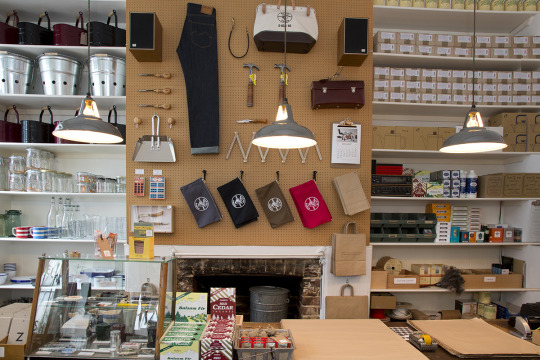
Our first shop on Cheshire Street was fitted out with a set of vintage enamel industrial lampshades, which we had found at an antiques fair. Customers would always ask to buy them, so we decided to put them into production. These iconic factory style shades quickly became one of our best selling lines. That was around fifteen years ago!
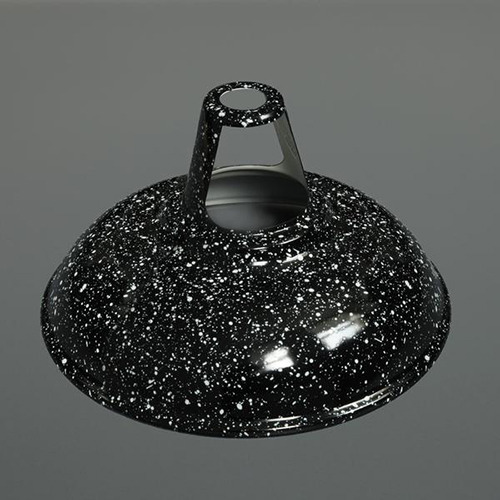
Although there are now numerous industrial type shades available, we feel our high quality enameled steel shades offer amazing value and are still the pick of the crop.
We also sell a range of twisted fabric covered flex and metal bulb holders which complete the look.
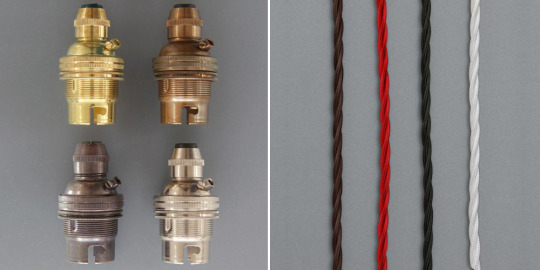
 These have been an obsession for many years! We even have a Brush Museum on display in our shop. There seems to have been a brush developed somewhere at sometime for every cleaning opportunity. Often considered a rather humble ‘everyday’ object they display a great degree of craftsmanship. We are always fascinated by the skill of the brush maker.
These have been an obsession for many years! We even have a Brush Museum on display in our shop. There seems to have been a brush developed somewhere at sometime for every cleaning opportunity. Often considered a rather humble ‘everyday’ object they display a great degree of craftsmanship. We are always fascinated by the skill of the brush maker.
Labour and Wait is delighted to collaborate with The Gentle Author to present a Spitalfields Life Bookshop for 10 days at our Bethnal Green Workroom. This will be a rare chance to take a look at all Spitalfields Life Books titles in one place and have a peek behind the scenes at Labour and Wait.
The bookshop will be open between 11am and 6pm everyday from Wednesday 26th April until Saturday 6th May, except for Sunday 30th April.
On Tuesday 25th April at 7:00pm, we shall be launching the latest title from Spitalfields Life Books, A HOXTON CHILDHOOD & THE YEARS AFTER by A.S. JASPER and we hope you will join us in a celebration. There will be drinks and readings from the work of A.S. JASPER, as well as some live music entertainment from fiddler Dan Mayfield and singing by Henrietta Keeper.
Click here for ticket availability.
A.S. JASPER’S tender memoir of growing up in the East End before the First World War, A HOXTON CHILDHOOD, was immediately acclaimed as a classic in 1969 when it was described by the Observer as ‘Zola without all the trimmings.’
In this definitive new edition, it is accompanied by the first publication of the sequel detailing the author’s struggles and eventual triumph in the cabinet-making trade, THE YEARS AFTER. Illustrated with line drawings by James Boswell and Joe McLaren.
Ticket holders will be entitled to a £5 discount on A HOXTON CHILDHOOD & THE YEARS AFTER during the event.
Labour and Wait Workroom
30 The Oval, London, E2 9DT
 In our view packaging can make or break a product. We often remove packaging from our stock, but we leave it in place if we feel it enhances the object. We are drawn to simple graphic treatments. In many cases this is packaging that has remained unchanged over the years. Well-designed packaging is often hard to throw away!
In our view packaging can make or break a product. We often remove packaging from our stock, but we leave it in place if we feel it enhances the object. We are drawn to simple graphic treatments. In many cases this is packaging that has remained unchanged over the years. Well-designed packaging is often hard to throw away!
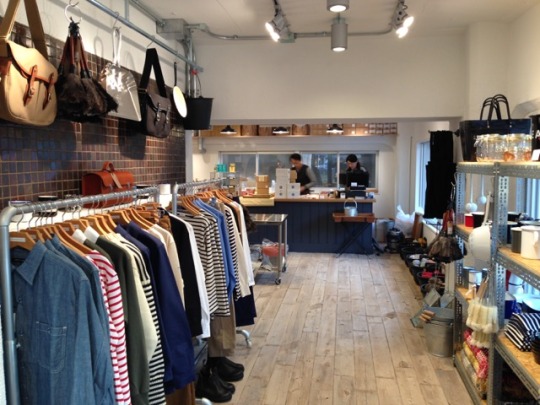
We are very excited to announce the opening of our Labour and Wait shop in Tokyo. We have enjoyed a longstanding association with Japan over many years, and have several concessions there in different cities. We are always impressed by the level of interest and product knowledge of Japanese customers, who really seem to appreciate the detail, and share our enthusiasm for timeless functional items.
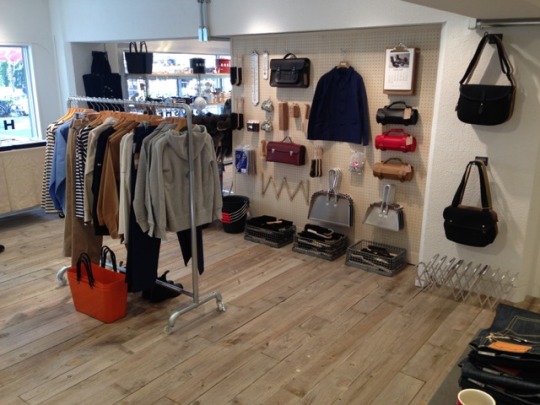
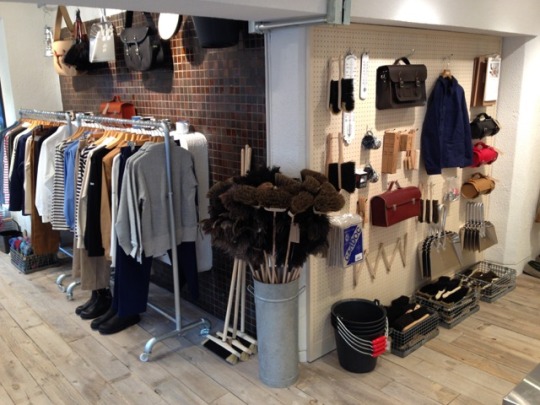
The opening this week represents an exciting opportunity for us to bring the complete Labour and Wait story to Tokyo. The new shop is situated in an area called Sendagaya, just a short walk from Harajuku station. The area has a definite ‘neighbourhood’ feeling, much like that which we experienced when we first started in Shoreditch seventeen years ago.
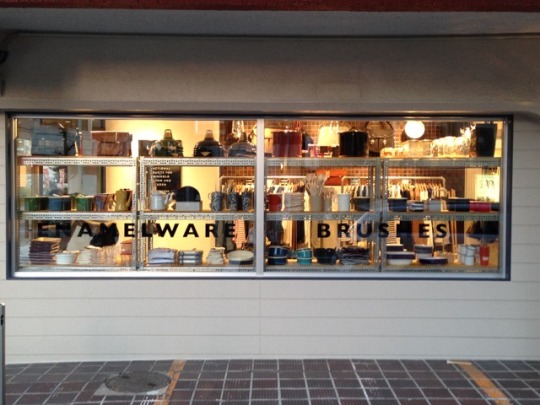

We are indebted to our colleagues in Japan for making our vision a reality, and are looking forward to the next chapter of our story.
Labour and Wait Tokyo
1-1-12 Jingumae Shibuyaka,
Tokyo, Japan
Opening hours: 12pm - 8pm
Tel: 03-6804-6448
 A jug is a very handsome object, its function is proudly displayed. Who would think such a simple combination of a lip and handle could produce so many variations. This iconic object appeals to artists and often features in still life artworks. And after all what would a calendar be without jugs!
A jug is a very handsome object, its function is proudly displayed. Who would think such a simple combination of a lip and handle could produce so many variations. This iconic object appeals to artists and often features in still life artworks. And after all what would a calendar be without jugs!
 The contents of a toolbox are always intriguing. The distinctive smell conjures up memories of sheds and workshops. A well-loved tool develops a character all of its own, the worn handle taking on the imprint of its owner’s hand. We have come across many curious tools during our travels. We find ourselves attracted by their shape even when we have no idea of their purpose.
The contents of a toolbox are always intriguing. The distinctive smell conjures up memories of sheds and workshops. A well-loved tool develops a character all of its own, the worn handle taking on the imprint of its owner’s hand. We have come across many curious tools during our travels. We find ourselves attracted by their shape even when we have no idea of their purpose.
 There are certain objects with which we find ourselves endlessly fascinated. Our mutual admiration of these, helped form the basis for LABOUR AND WAIT, and in many instances feature in our product assortment to this day. Just what is it that makes these objects so appealing to us? Why do they capture our imagination in such a powerful way? For our 2017 calendar, we are exploring these questions further.
There are certain objects with which we find ourselves endlessly fascinated. Our mutual admiration of these, helped form the basis for LABOUR AND WAIT, and in many instances feature in our product assortment to this day. Just what is it that makes these objects so appealing to us? Why do they capture our imagination in such a powerful way? For our 2017 calendar, we are exploring these questions further.
Throughout the year we will be sharing each monthly image and accompanying text.
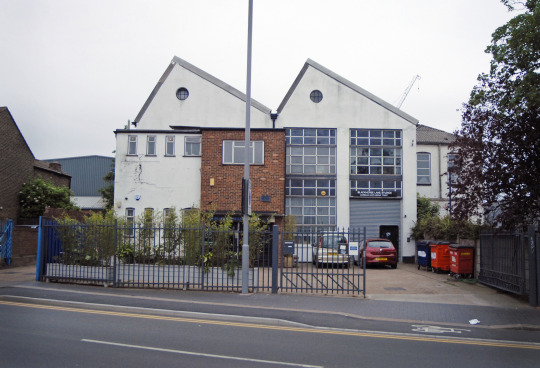
We have always felt an affinity with workwear as it is a perfect expression of utilitarian aesthetics. One of the most timeless staples of the modern wardrobe derived from workwear is undoubtedly the denim jean. From the pioneering frontier Americans of the 1800s pushing west following the gold rush, to James Dean making them ‘cool’ in the 1950s, denim jeans have an unmatched, redoubtable reputation in the world of trousers, being both sturdy and reliable.

Here at LABOUR AND WAIT we have always appreciated the hard-working denim jean, and we have at last found some that exemplify our values. Blackhorse Lane Ateliers was founded in 2016, with the intention of creating authentic, premium quality selvedge denim jeans manufactured in Walthamstow, London. We are proud to say that we are their very first stockist.
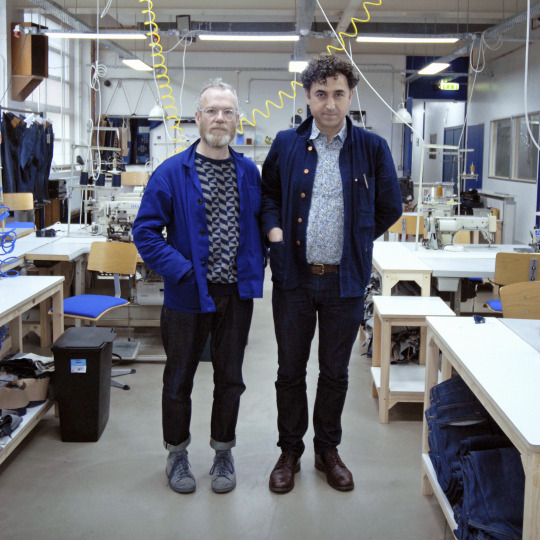
Blackhorse Lane Ateliers was founded by Han Ates, a veteran of the East London clothing and textile manufacturing industry; and Toby Clark, a recognised and highly-regarded designer. They strive to create a business that connects nature to industry and which invests into the local community with an eye for sustainability and ‘the long game’.
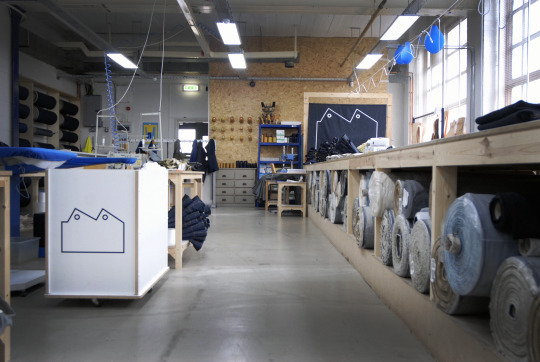
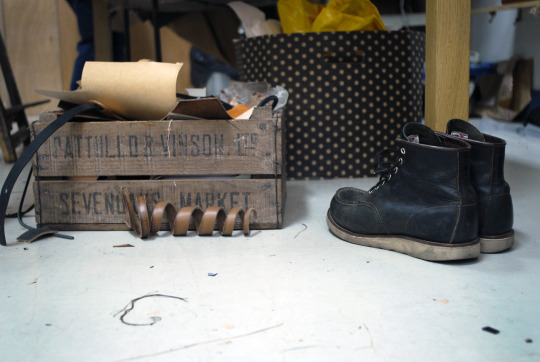
Han and Toby are keen to promote close relationships with like-minded, creative individuals in the neighbourhood. To this end they have created studio spaces within their 1920s factory building for individual makers who share their vision. This encourages collaboration across different disciplines such as leather working, weaving and dyeing, similar to the approach of the Bauhaus.


The jeans we have chosen from Blackhorse Lane Ateliers are made from responsibly sourced 14oz raw denim with a red selvedge edge. The fit is a straight leg, relaxed ‘1950s’ heritage style.

Both modern and vintage machinery are employed during the manufacturing process to attain an authentic finish.
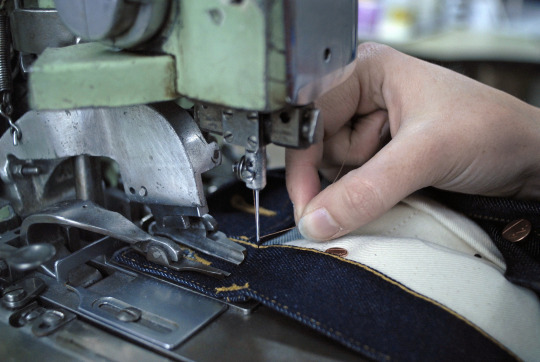
There is great attention paid to detail, with over 16 different processes involved in the making of each pair of jeans.


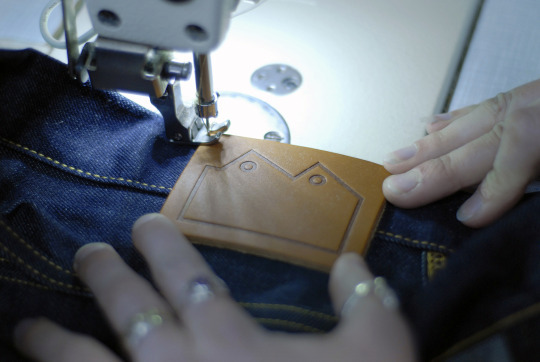
The finished jeans are presented in a hand-stamped potato sack, bearing the factory silhouette. This shape is also used on the traditional leather patch and on the back pocket stitch detail.
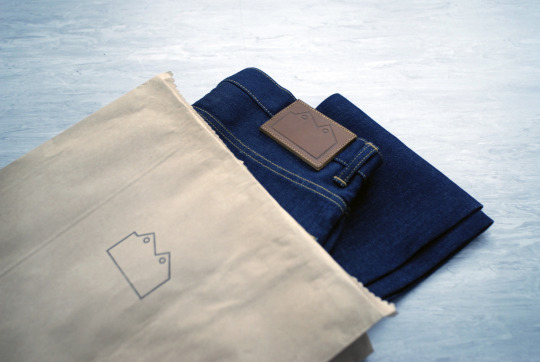
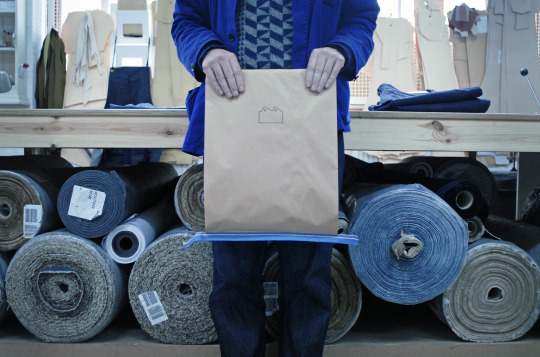
Blackhorse Lane Ateliers jeans are available in our Redchurch Street shop from June 2016 and will find their way into our Dover Street Market London space from mid-July.
Photos by David Rowswell
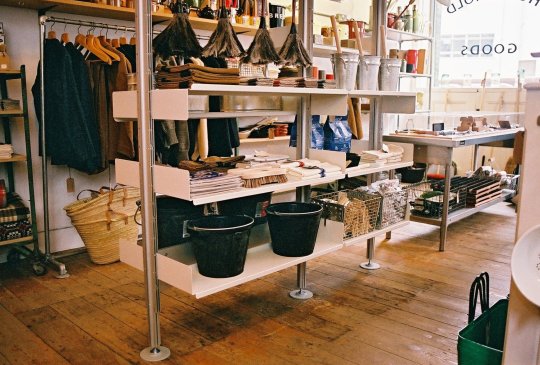
Spring is here again, at least some of the time! Longer, lighter days inspire us to shake off the dust, blow away the cobwebs, and reach for the broom and the floor cloth…
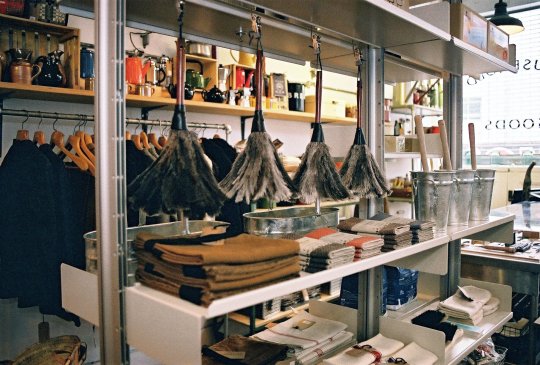
In celebration of Spring cleaning we joined forces with Vitsœ to envision The Modern Scullery. This could be a room all to itself or just a couple of shelves beside the back door. The classic Vitsœ 606 Universal Shelving System provides the structure; Labour and Wait household essentials are the content. The fusion of our ideas with those of Vitsœ resulted in a floor-to-ceiling installation at our Redchurch Street shop, which visitors have been admiring since it went up in March.

Creating the display brought pleasant surprises. A harmony between the Vitsœ shelving and our products meant that brushes and dustpans somehow arranged themselves. A line-up of feather dusters never looked so good. Like our sturdy housekeeper’s bucket, the 606 system promises a lifetime of use.

Talking to the Vitsœ team, we found we had ideals in common. Like them, we admire discreet and durable design based on common-sense principles. The collaboration has been a highly rewarding one for Labour and Wait. Thank you, Vitsœ.

Simultaneous displays at our Redchurch Street shop and at the Vitsœ West End showroom have perhaps inspired visitors to attack their spring cleaning with fresh energy!
Photos by David Rowswell
 The colour of the earth. A rich, dark, peat brown, evoking leather, wood and even chocolate. We always find ourselves drawn to this colour; its depth has a graphic quality like black, but with a warmer, more natural feel. We even fantasise about opening a shop where all the products are brown!
The colour of the earth. A rich, dark, peat brown, evoking leather, wood and even chocolate. We always find ourselves drawn to this colour; its depth has a graphic quality like black, but with a warmer, more natural feel. We even fantasise about opening a shop where all the products are brown!
 An esoteric choice, this is not really one colour at all, but rather a mélange of blacks, greys and natural tones. We appreciate this colour in many materials: stone, flannel and asphalt, to name but three. It brings to mind the grey felt sculptures of Joseph Beuys, whose work we have long admired.
An esoteric choice, this is not really one colour at all, but rather a mélange of blacks, greys and natural tones. We appreciate this colour in many materials: stone, flannel and asphalt, to name but three. It brings to mind the grey felt sculptures of Joseph Beuys, whose work we have long admired.
 There is something immensely satisfying about the classic Sussex trug. It is still hand-made from coppiced willow and chestnut in Sussex - a county with which we feel a strong affinity. The trug is a staple feature of many great English gardens. An object of simple beauty, a genuine Sussex trug will only mellow and improve with age.
There is something immensely satisfying about the classic Sussex trug. It is still hand-made from coppiced willow and chestnut in Sussex - a county with which we feel a strong affinity. The trug is a staple feature of many great English gardens. An object of simple beauty, a genuine Sussex trug will only mellow and improve with age.
 The quality of old linen is hard to beat. We always have a selection of vintage tea towels in stock. Most are sourced from France, though we have also found beautiful examples from Hungary. Many display the finely embroidered initials of their original owner, to help identify them during laundering. These tea towels will become softer and more absorbent with use.
The quality of old linen is hard to beat. We always have a selection of vintage tea towels in stock. Most are sourced from France, though we have also found beautiful examples from Hungary. Many display the finely embroidered initials of their original owner, to help identify them during laundering. These tea towels will become softer and more absorbent with use.
 Drab in name but not by nature! We like the functional aspects of this organic colour, which makes us think of army kit and outdoor clothing. It is a difficult shade to define, ranging from greeny brown, to browny green. We also enjoy its association with the clays and glazes used by studio potters.
Drab in name but not by nature! We like the functional aspects of this organic colour, which makes us think of army kit and outdoor clothing. It is a difficult shade to define, ranging from greeny brown, to browny green. We also enjoy its association with the clays and glazes used by studio potters.
 The perennial striped shirt. This garment was traditionally worn by French sailors and was later adopted by the creative cognoscenti. It almost became a uniform for artists and bohemian types. We love its timeless quality and unisex appeal. It seems to suit everyone and has thus become a wardrobe staple.
The perennial striped shirt. This garment was traditionally worn by French sailors and was later adopted by the creative cognoscenti. It almost became a uniform for artists and bohemian types. We love its timeless quality and unisex appeal. It seems to suit everyone and has thus become a wardrobe staple.
 Made from olive oil, this mild, totally naturally soap has all the credentials of a classic Labour and Wait product. It is pure, economical and astonishingly versatile. You can use it to wash your home, your laundry, yourself - and even your pets! The city of Marseille has an association with making soap which dates back to the 17th century.
Made from olive oil, this mild, totally naturally soap has all the credentials of a classic Labour and Wait product. It is pure, economical and astonishingly versatile. You can use it to wash your home, your laundry, yourself - and even your pets! The city of Marseille has an association with making soap which dates back to the 17th century.
 This now iconic milk pot caused something of a storm when it was given a full page in a Sunday supplement. We were taken off guard when the readers took it to their hearts as we had done. A deluge of enquiries resulted in a waiting list of almost 200 customers! The milk pot is now available in exclusive colours and remains a favourite.
This now iconic milk pot caused something of a storm when it was given a full page in a Sunday supplement. We were taken off guard when the readers took it to their hearts as we had done. A deluge of enquiries resulted in a waiting list of almost 200 customers! The milk pot is now available in exclusive colours and remains a favourite.
 This rope doorstop is hand-made by Des Pawson MBE, a leading authority on rope and knot work. It takes the form of a giant Monkey's Fist knot. Hidden inside are two half-spheres of solid lead. Weighing in at over three kilos, this doorstop has often caught the eye of overseas visitors, but usually common sense prevails!
This rope doorstop is hand-made by Des Pawson MBE, a leading authority on rope and knot work. It takes the form of a giant Monkey's Fist knot. Hidden inside are two half-spheres of solid lead. Weighing in at over three kilos, this doorstop has often caught the eye of overseas visitors, but usually common sense prevails!
 A colour associated with straw, wood, dried grasses and wicker. It also evokes brown paper and cardboard. Its neutrality makes it a good background for typography. It is entirely at home in the world of craft items, and is a signature colour at LABOUR AND WAIT.
A colour associated with straw, wood, dried grasses and wicker. It also evokes brown paper and cardboard. Its neutrality makes it a good background for typography. It is entirely at home in the world of craft items, and is a signature colour at LABOUR AND WAIT.
 We couldn't find a decent loo-brush set, so we created our own. We knew that it would have to feature a wood brush, but what to store it in? We really like galvanized steel, so what better than a florist's bucket? This combination has proved very popular, and indeed has spawned imitations - but ours is the true original!
We couldn't find a decent loo-brush set, so we created our own. We knew that it would have to feature a wood brush, but what to store it in? We really like galvanized steel, so what better than a florist's bucket? This combination has proved very popular, and indeed has spawned imitations - but ours is the true original!
 Our canvas aprons have become a Labour and Wait classic. We made the prototypes ourselves, as our staff uniform. Soon customers were wanting to buy them, so we found a factory in the UK and started production. From these humble beginnings, we now supply the classic brown apron to restaurants, coffee shops and bars worldwide. Hundreds more have been sold to individuals via our shop and website.
Our canvas aprons have become a Labour and Wait classic. We made the prototypes ourselves, as our staff uniform. Soon customers were wanting to buy them, so we found a factory in the UK and started production. From these humble beginnings, we now supply the classic brown apron to restaurants, coffee shops and bars worldwide. Hundreds more have been sold to individuals via our shop and website.
 This simple glass tumbler takes us right back to school dinners. These glasses have 'mystery' numbers embossed on the base, providing lunchtime entertainment. Although we associate these tumblers with our childhood, they are the perfect size for a decent glass of wine at the end of a long day. Their pleasing, rounded shape and simple, functional design make them a joy to hold.
This simple glass tumbler takes us right back to school dinners. These glasses have 'mystery' numbers embossed on the base, providing lunchtime entertainment. Although we associate these tumblers with our childhood, they are the perfect size for a decent glass of wine at the end of a long day. Their pleasing, rounded shape and simple, functional design make them a joy to hold.
 We bought one of these dustpans in America and, once we used it, became even more convinced of its great design and practicality. It has been produced for many years and is widely used in the building and carpentry trade in the USA. On more than one occasion, customers have come back to buy a replacement after the builders had appropriated the first one!
We bought one of these dustpans in America and, once we used it, became even more convinced of its great design and practicality. It has been produced for many years and is widely used in the building and carpentry trade in the USA. On more than one occasion, customers have come back to buy a replacement after the builders had appropriated the first one!
 These blankets evoke fond memories of holidays in Wales and of mill shops selling items made from traditional tapestry fabric. These could be anything from complete outfits including bags and hats, to coasters and placemats (well, this was the 1970s!) We have collected and sold hundreds of vintage blankets. Today, we work with one of the few remaining Welsh mills, who continue to weave this fabric.
These blankets evoke fond memories of holidays in Wales and of mill shops selling items made from traditional tapestry fabric. These could be anything from complete outfits including bags and hats, to coasters and placemats (well, this was the 1970s!) We have collected and sold hundreds of vintage blankets. Today, we work with one of the few remaining Welsh mills, who continue to weave this fabric.
 Crisp white cotton, cool white linen and soft white chalk – they all confirm our passion for this colour. We like its severe, clinical connotations, though softer bleached or faded whites are no less pleasing. After all, what is more satisfying than a fresh sheet of white paper?
Crisp white cotton, cool white linen and soft white chalk – they all confirm our passion for this colour. We like its severe, clinical connotations, though softer bleached or faded whites are no less pleasing. After all, what is more satisfying than a fresh sheet of white paper?
 A good pot of paper glue! We remember this product from our childhood. It has a distinctive almond aroma, redolent of primary school art classes. Customers always respond to this product. One lady memorably told us that she used to eat it as a child! This, however, we would not recommend...
A good pot of paper glue! We remember this product from our childhood. It has a distinctive almond aroma, redolent of primary school art classes. Customers always respond to this product. One lady memorably told us that she used to eat it as a child! This, however, we would not recommend...
 This classic item of workwear has been an essential outer layer for British fisherman for over a century. The practical, utilitarian nature of the smock makes it popular with painters, sculptors and craftsmen. Most staff at Labour and Wait seem to own one! Our smocks come from Norfolk, where they have been produced since 1898.
This classic item of workwear has been an essential outer layer for British fisherman for over a century. The practical, utilitarian nature of the smock makes it popular with painters, sculptors and craftsmen. Most staff at Labour and Wait seem to own one! Our smocks come from Norfolk, where they have been produced since 1898.
 As ardent tea drinkers, we believe that a good teapot is indispensable! This classic teapot is still made in Stoke-on-Trent, as it has been for generations. We specify a clear glaze, to allow the colour of the local brown clay to shine through, as this gives the Brown Betty its name. Successive generations have sworn that these teapots make the best pot of tea in the world.
As ardent tea drinkers, we believe that a good teapot is indispensable! This classic teapot is still made in Stoke-on-Trent, as it has been for generations. We specify a clear glaze, to allow the colour of the local brown clay to shine through, as this gives the Brown Betty its name. Successive generations have sworn that these teapots make the best pot of tea in the world.
 This was the first broom on our wish list when we opened our original shop. Its humble design and good looks appeal to us. This type of broom originated with the Shakers in 19th century America. It is practical and hard-wearing - and of course it features in Tom and Jerry cartoons!
This was the first broom on our wish list when we opened our original shop. Its humble design and good looks appeal to us. This type of broom originated with the Shakers in 19th century America. It is practical and hard-wearing - and of course it features in Tom and Jerry cartoons!
We have selected fifteen products which embody the Labour and Wait ethos, which we will feature here each week for 15 weeks. These items have been present in our offer since the very beginning.
We believe that they are as essential today as they were back then; timeless products that are forever useful.
We celebrated our fifteenth anniversary in style on Thursday 2nd of July.
 Getting the final touches on our window display sorted.
Getting the final touches on our window display sorted.
 Looking good from the outside...
Looking good from the outside...
 Staff preparing the playlist for the evening. Those Swedish bucket bags make perfect vinyl carrying vessels!
Staff preparing the playlist for the evening. Those Swedish bucket bags make perfect vinyl carrying vessels!
 The booklets produced showing our inspirations, philosophy and products, since 2000.
The booklets produced showing our inspirations, philosophy and products, since 2000.
 A thoroughly engaging read; Alfred here, our supplier of handmade wooden bath racks, only wishes he'd been supplying us earlier so he could've featured!
A thoroughly engaging read; Alfred here, our supplier of handmade wooden bath racks, only wishes he'd been supplying us earlier so he could've featured!
 Food and drink flowing. Simon at the back pointing out something on the pegboard that has gone wonky.
Food and drink flowing. Simon at the back pointing out something on the pegboard that has gone wonky.
 Rachel and Simon receive a cake for all their hardwork over the last 15 years. Happy Anniversary Labour and Wait!
Rachel and Simon receive a cake for all their hardwork over the last 15 years. Happy Anniversary Labour and Wait!
 From the outset, there was only one typeface in our minds for Labour and Wait: Gill Sans.
From the outset, there was only one typeface in our minds for Labour and Wait: Gill Sans.
These classic letterforms were designed by Eric Gill and first appeared around 1928. For us, Gill Sans perfectly embodies a graphic simplicity; clear, informative and timeless. Naturally, our choice was influenced by the iconic covers of the first Penguin books.
Gill Sans was also widely used for industrial supply catalogues from the 1930s through to the 1950s, which we enjoy collecting. In addition, we appreciate traditional stationery such as rubber stamps, embossed cards and school exercise books. We like to reference all this material in our branding.
 A strangely synthetic shade of blue. Applied to many functional everyday products and frequently found in toolboxes. Rawlplugs, electrical wiring, and screwdriver handles often come in this striking shade. Plastics and other man-made materials give the colour a special vibrancy.
A strangely synthetic shade of blue. Applied to many functional everyday products and frequently found in toolboxes. Rawlplugs, electrical wiring, and screwdriver handles often come in this striking shade. Plastics and other man-made materials give the colour a special vibrancy.
 Our goods come from many different sources. We endeavour to search out specialist makers who in many cases manufacture products to the original deigns, using traditional methods.
Our goods come from many different sources. We endeavour to search out specialist makers who in many cases manufacture products to the original deigns, using traditional methods.
Our suppliers range from highly skilled individual craftspeople - like rope work Des Pawson or Sussex trig maker Robin Tuppen - to small family-run workshops such as R. Russell, brush makers. We also work with larger factories like Riess Kelomat in Austria, but this again is a family business. More recently, we have begun collaborating with our makers to develop products which are exclusive to Labour and Wait. It is a real pleasure and privilege to work with these companies and hopefully to ensure the continuity of traditional industries.
We stock vintage items too, always carefully selected. Again, these are objects which have a timeless quality, but all must be fit for use, not just for display. We keep a constant lookout for favourites like stoneware marmalade jars or Lovatts coffee pots, which sadly are no longer made.
"Fifteen years ago, I made the pilgrimage to Labour and Wait - seeking out the first shop in Cheshire Street on a busy market Sunday - and since then, barely a month has gone without a return visit, to admire the magnificent displays of hardware.
It always raises a smile to wonder at the heroic arrangements of everyday objects, but I realise now that it has been an education too - Labour and Wait has taught me an appreciation of both the poetry and the humour of these modest household goods.
If, like me, you seek perfection in small things - shiny kettles, enamel pots and pans, galvanised buckets and watering cans, proper bristly brushes and balls of string - Labour and Wait will never disappoint you."
The Gentle Author, Spitalfields
 Labour and Wait is 15 years old today.
Labour and Wait is 15 years old today.
Our aim from the start has been to offer a selection of simple, functional products for daily lie, which not only 'do the job' but look great as well. It had become increasingly difficult to find good-quality 'undesigned' articles, which by their very nature do not date. In fact, we believe such objects actually improve with age as they develop a patina through use.
This philosophy, which has always guided our choice of household products, applies no less in other categories. Classic practical clothing, for example, has been part of Labour and Wait since we began - from striped Breton shirts to genuine Guernsey sweaters.
We aim to source or create products which have a universal appeal and are not bounded by age or gender. In our fifteenth anniversary year, our original concept and beliefs remain unchanged.
 A bold and cheerful orange. This colour works well in typographical elements and paper products, but also when used for shiny enameled surfaces. A striking highlight, evoking building paraphernalia and warning signs. And for us a Penguin will always be, not black and white, but orange!
A bold and cheerful orange. This colour works well in typographical elements and paper products, but also when used for shiny enameled surfaces. A striking highlight, evoking building paraphernalia and warning signs. And for us a Penguin will always be, not black and white, but orange!
 This rich dark blue is a true classic, originating from naval uniforms. It is often contrasted with white or ecru. The classic striped Breton T-Shirt has become a LABOUR AND WAIT favourite. Textiles take this colour particularly well. It is also effective when used for typography, instead of the more obvious black.
This rich dark blue is a true classic, originating from naval uniforms. It is often contrasted with white or ecru. The classic striped Breton T-Shirt has become a LABOUR AND WAIT favourite. Textiles take this colour particularly well. It is also effective when used for typography, instead of the more obvious black.
 An optimistic colour which heralds the start of spring, promising a wealth of things natural; the yellows of beeswax, mustard seeds and egg yolk. But not for us! Instead, this colour makes us think of rubber gloves, dusters and protective oilskin clothing.
An optimistic colour which heralds the start of spring, promising a wealth of things natural; the yellows of beeswax, mustard seeds and egg yolk. But not for us! Instead, this colour makes us think of rubber gloves, dusters and protective oilskin clothing.
 This shade of green reflects our appreciation of an industrial aesthetic. Whenever we visit factories, we notice this particular colour all around us. It seems that much industrial machinery of the past as painted in this shade of green. This is not a natural colour but rather a mechanical one.
This shade of green reflects our appreciation of an industrial aesthetic. Whenever we visit factories, we notice this particular colour all around us. It seems that much industrial machinery of the past as painted in this shade of green. This is not a natural colour but rather a mechanical one.
 A true red which demands attention. Historically a colour of passion and power, red also has strong associations with danger. For us, it is a very British colour, redolent of London buses, telephone boxes of old and regimental uniforms. It also lends itself to utilitarian products and tools.
A true red which demands attention. Historically a colour of passion and power, red also has strong associations with danger. For us, it is a very British colour, redolent of London buses, telephone boxes of old and regimental uniforms. It also lends itself to utilitarian products and tools.
 Deep and dark, black gives objects a sculptural quality, as it defines their shape. We often choose black products for LABOUR AND WAIT; the density of the colour can create a dramatic effect. The bold, graphic combination of black with white always has impact.
Deep and dark, black gives objects a sculptural quality, as it defines their shape. We often choose black products for LABOUR AND WAIT; the density of the colour can create a dramatic effect. The bold, graphic combination of black with white always has impact.

Now that our 2015 Calendar is sold out, we will be sharing each monthly image on our blog throughout the year.
Our calendar this year takes the form of an imaginary chart showing twelve of our favourite colours. We find that we are naturally drawn to certain shades, often those which resonate by reminding us of some particular object. These colours reoccur in many of the products which we select for the shop. We have an aversion to all things ‘pretty’, preferring solid, durable tones. We asked ourselves: ‘What would a LABOUR AND WAIT colour chart look like? What would we name the colours…?’
Until then, here are some behind the scenes images taken during our shoot.
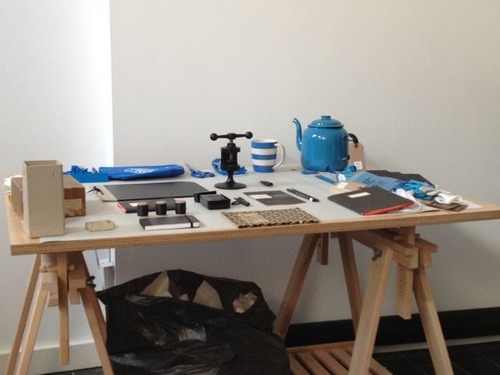
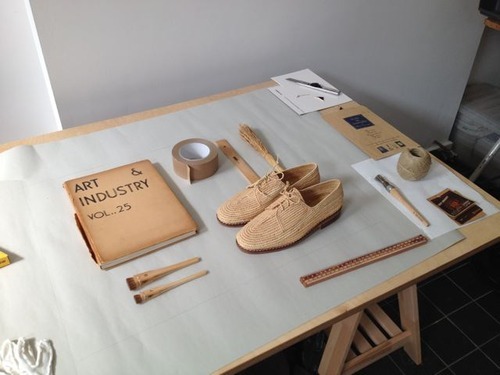

 Warm, comfortable and protective, wool is the cosiest material of them all. We particularly like natural, undyed shades and their many variations, which result from the breed and location of the sheep. We are ardent admirers of artist Joseph Beuys. You may detect a nod towards his work in our 'felty' still life.
Warm, comfortable and protective, wool is the cosiest material of them all. We particularly like natural, undyed shades and their many variations, which result from the breed and location of the sheep. We are ardent admirers of artist Joseph Beuys. You may detect a nod towards his work in our 'felty' still life.
 At LABOUR AND WAIT, we seem to spend our days in a sea of cardboard. Shipments arriving, orders leaving and a great deal of unpacking in between. Here is a material that really deserves its place in our calendar. Our mail-order team in particular have grown to love cardboard and its infinite possibilities.
At LABOUR AND WAIT, we seem to spend our days in a sea of cardboard. Shipments arriving, orders leaving and a great deal of unpacking in between. Here is a material that really deserves its place in our calendar. Our mail-order team in particular have grown to love cardboard and its infinite possibilities.
 The sheer weight and robustness of iron demands particular respect. Iron has a 'no-nonsense' sensibility. From heavy machinery to small kitchen items, this material is more versatile than one might suppose. We love its sculptural qualities: in the right hands, iron can take on surprisingly sophisticated forms.
The sheer weight and robustness of iron demands particular respect. Iron has a 'no-nonsense' sensibility. From heavy machinery to small kitchen items, this material is more versatile than one might suppose. We love its sculptural qualities: in the right hands, iron can take on surprisingly sophisticated forms.
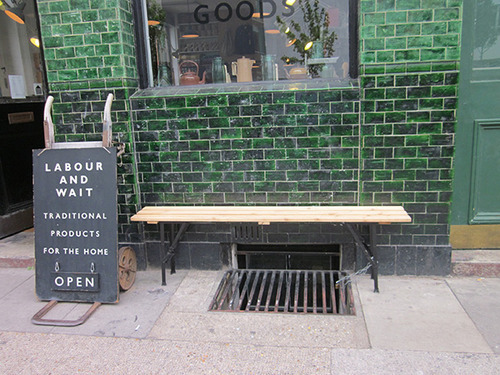
We put our bench outside each morning and wonder who might happen by, looking for a sit-down. It could be tourists or locals, couples or families, dog-walkers, picnickers or simply Shoreditch flâneurs. On a Sunday, it could be shoppers from Columbia Road who need to rest their jasmines or their cheese plants.
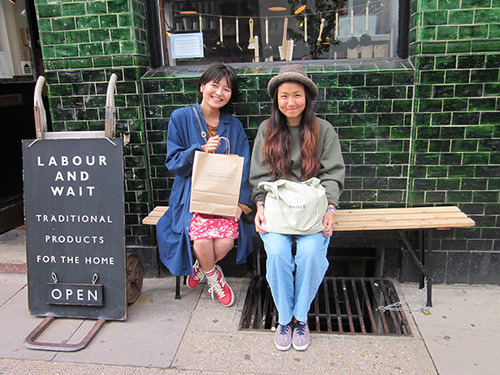
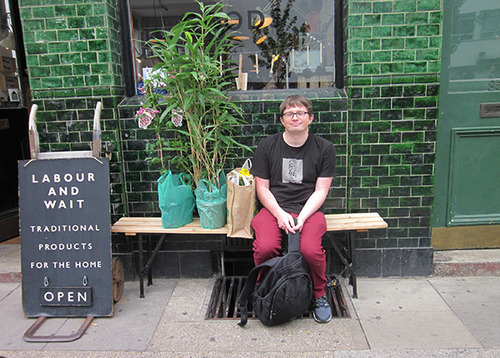
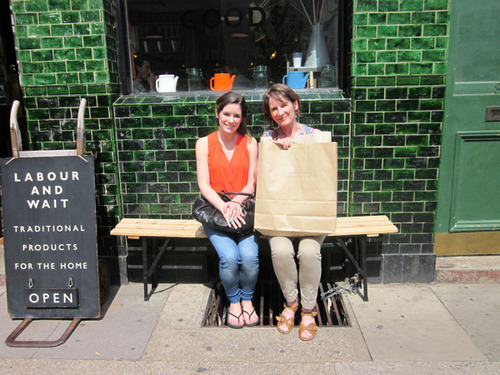
Bench-users from far-away places are a particular joy. (Thanks again, Rita and Reesi from Estonia and Harry and Jiwoon from South Korea, for letting us take your picture!)



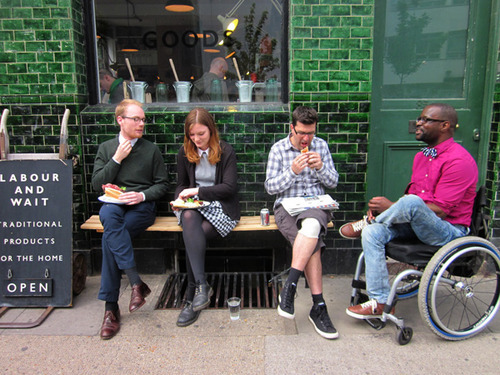
Now that misty mornings are back, we’re thinking about folding it away for another year. It’s all rather sad – like seeing the swallows heading south. We hope you’ll be flying back again next spring, looking for a place to perch.
 From shiny glazed china to rustic hand-made pottery, ceramics are a part of our everyday lives. We are very enthusiastic about studio pottery in particular, and have studio jugs, bowls and mugs in daily use at home. Our still life for September has a calm serenity which might almost recall a painting by Giorgio Morandi.
From shiny glazed china to rustic hand-made pottery, ceramics are a part of our everyday lives. We are very enthusiastic about studio pottery in particular, and have studio jugs, bowls and mugs in daily use at home. Our still life for September has a calm serenity which might almost recall a painting by Giorgio Morandi.
Our two styles of Blackwing Pencil are now available online.
The original Blackwing was introduced in the 1930’s and was available up until 1988, when it was discontinued. This caused an outcry, with many fans across the globe bidding against each other on auction sites in order to obtain them. In 2010, the historic pencil makers Palomino revived this stationary classic.
 Soon after opening LABOUR AND WAIT, we realised that we were not alone in our love of string. We pride ourselves on keeping a wide selection in stock. Humble and versatile, a ball of string should always be within arm's reach.
Soon after opening LABOUR AND WAIT, we realised that we were not alone in our love of string. We pride ourselves on keeping a wide selection in stock. Humble and versatile, a ball of string should always be within arm's reach.
 We have always enjoyed the comic potential of rubber objects. More seriously, whether as a pair of protective gloves or the business end of a sink plunger, rubber offers flexibility, water-resistance and insulation. We enjoy its matt surfaces, and subdued colours.
We have always enjoyed the comic potential of rubber objects. More seriously, whether as a pair of protective gloves or the business end of a sink plunger, rubber offers flexibility, water-resistance and insulation. We enjoy its matt surfaces, and subdued colours.
 What would LABOUR AND WAIT be without enamel? We were determined to champion this material from the very start. Overlooked for many years, enamel has recently enjoyed a revival to which we like to think we may have contributed. Enamel is again prized for its functionality as it was in the past, but now also for its green credentials.
What would LABOUR AND WAIT be without enamel? We were determined to champion this material from the very start. Overlooked for many years, enamel has recently enjoyed a revival to which we like to think we may have contributed. Enamel is again prized for its functionality as it was in the past, but now also for its green credentials.
 The innate beauty of natural linen is enduring. Rustic, yet at the same time sophisticated, this must be one of nature's most refined fibres. Soft but incredibly strong, linen has many applications. We love the texture of upholsterers webbing and linen scrim. A pile of freshly-ironed linen tea towels is a pleasure to behold!
The innate beauty of natural linen is enduring. Rustic, yet at the same time sophisticated, this must be one of nature's most refined fibres. Soft but incredibly strong, linen has many applications. We love the texture of upholsterers webbing and linen scrim. A pile of freshly-ironed linen tea towels is a pleasure to behold!
Dogs are welcome at LABOUR AND WAIT when they are as well-behaved as Ralph. Ralph is a cross chow and Australian cattle dog and he has a beautiful russet coat.
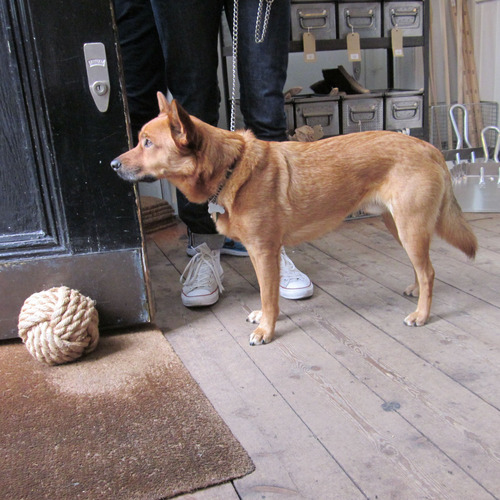
That said, he doesn’t like having his picture taken so we had to catch him unawares.
Of interest to Ralph and others like him are our classic ceramic feeding bowls, handkerchief (for walkers or walkees), our soft but sturdy rope dog leads, purpose-built dog whistle and our scrumptious felt slippers with chewy rubber soles.
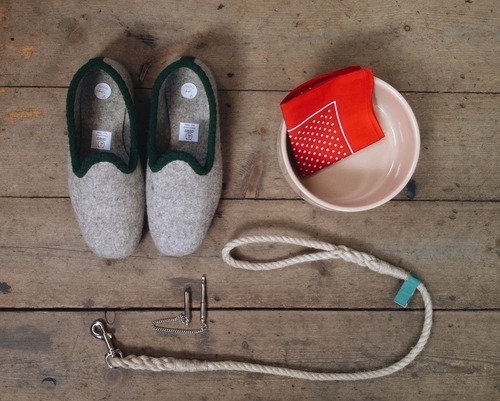
–
Thanks again to Ralph’s owners for letting us feature him here.
 Though often shunned as a cheap material, plastic, we believe, can be beautiful. We have always admired the earlier types of plastic, with their mottled and marble-like appearance: Bandalasta, Bakelite, the poetically named Linga-Longa ware and Beetleware to name but a few. More recently, we have come to appreciate newer recycled plastics.
Though often shunned as a cheap material, plastic, we believe, can be beautiful. We have always admired the earlier types of plastic, with their mottled and marble-like appearance: Bandalasta, Bakelite, the poetically named Linga-Longa ware and Beetleware to name but a few. More recently, we have come to appreciate newer recycled plastics.
 Cold and clean, metal combines strength with precision. These steely objects mean business. Even archaic forms take on a modern, industrial look when made from steel or aluminium. Brushed metallic surfaces reflect light in a unique manner. 'All that glisters is not gold' ... indeed for us, a steely scene as far more allure.
Cold and clean, metal combines strength with precision. These steely objects mean business. Even archaic forms take on a modern, industrial look when made from steel or aluminium. Brushed metallic surfaces reflect light in a unique manner. 'All that glisters is not gold' ... indeed for us, a steely scene as far more allure.
 We particularly relish the clinical, 'laboratory' connotations of glass. We find its clean lines and transparency very appealing. Plain glass catches the light and can take on surprising colours when viewed from an angle. Brown apothecary glass is a particular favourite, though a plain glass tumbler is also a joy.
We particularly relish the clinical, 'laboratory' connotations of glass. We find its clean lines and transparency very appealing. Plain glass catches the light and can take on surprising colours when viewed from an angle. Brown apothecary glass is a particular favourite, though a plain glass tumbler is also a joy.
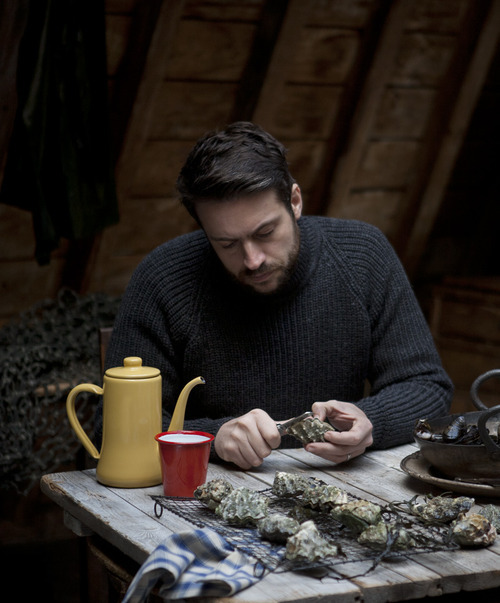
Friend of Labour and Wait, photographer Jeff Cottenden, recently borrowed a selection of our products for a personal project - He’s kindly shared some of the resulting shots with us. We always enjoy seeing items so familiar to ourselves from another point of view and we hope you will too.
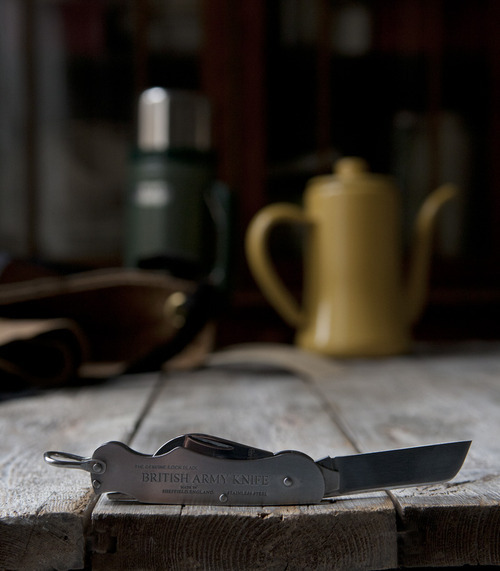
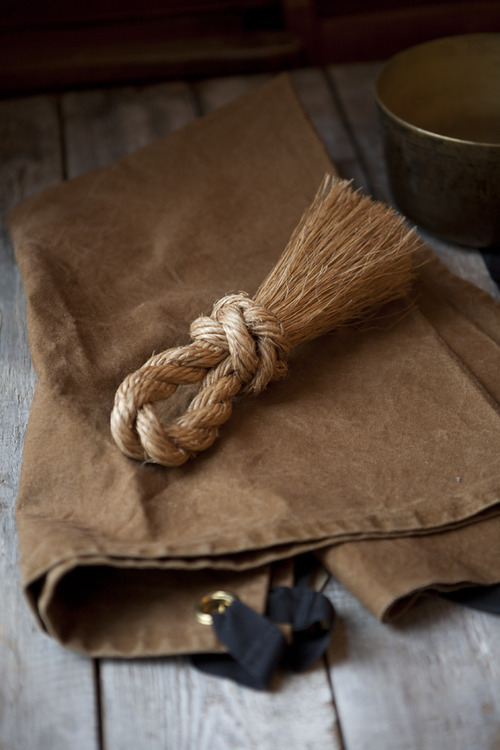

Featuriung our Mustard Coffee Pot, British Army Knife, Sailor’s Whisk, Work Apron, Enamel Tumbler and Fisherman’s Sweater.
See more of Jeff’s work at www.jeffcottenden.co.uk
 The natural, tactile qualities of wood speak for themselves. Warm to the touch, wooden objects tend to mellow over time. In fact, they often look better the more they are used, displaying their scuffs and scratches as badges of honour. Wood is a truly timeless material. We would never be without a wooden scrubbing brush or ruler.
The natural, tactile qualities of wood speak for themselves. Warm to the touch, wooden objects tend to mellow over time. In fact, they often look better the more they are used, displaying their scuffs and scratches as badges of honour. Wood is a truly timeless material. We would never be without a wooden scrubbing brush or ruler.
 Throughout the new year we will be sharing each monthly image from our 2014 calendar.
Throughout the new year we will be sharing each monthly image from our 2014 calendar.
Among the key criteria for selecting our products is the type and quality of the materials used. Each must be fit for purpose and long lasting. We appreciate the tactile surfaces and innate qualities of the different materials we come across; many seem to crop up again and again. In this years calendar, we celebrate the unique characteristics of twelve of our favourite materials. They appear in a series of still-lives, in which utilitarian, sometimes overlooked, objects are given closer scrutiny.
And so we reach December, and the final entry in our 2013 Tools of the Trade Calendar. We take a trip once more to Wales, where we find Tom and Anna, proprietors of the Solva Woollen Mill, and makers of our Welsh Tapestry Rugs.

Nestled deep in the Pembrokeshire countryside, the Solva mill has been in operation on this site for over a hundred years, weaving tweeds, flannel, rugs, blankets and stair carpets, and warping wool for knitting.
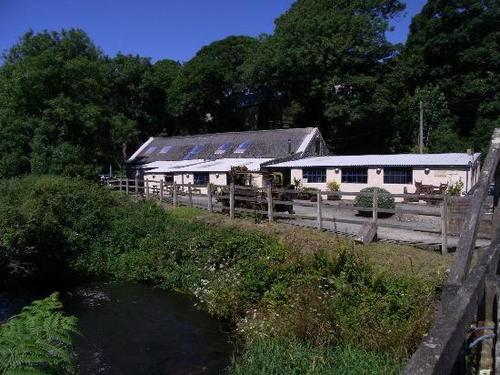
Originally established in 1907 by Tom Griffiths, Solva was passed down to his daughter Betty and son-in-law Eric on Tom’s retirement in 1950. Betty and Eric ran it for another thirty six years before passing it on to Cynthia and Robert Grime, who in turn passed it on in 2006 to their son Tom, and his wife Anna. The continuity provided by family is important at Solva, as Anna explains:
“The mill has only been owned by two families since it was built and Tom’s family history is intertwined with that of the previous mill owners all the way back to the early 1900s. His grandfather went to school with one of Betty’s brothers and they have always had close family ties. Tom was doing his A-Levels when his parents decided to buy the mill and he jumped at the chance of learning new skills associated with engineering and manufacturing.”

Eric at work ( above ) and Tom ( below ). Eric stayed on at the mill after retirement to help Tom and Anna learn how to run the mill and how to operate the complex machinery, and in particular how to work the Dobcross looms used to produce the tapestry rugs.

The Hattersley Dobcross Box Loom was the workhorse of Twentieth Century British weaving, producing countless thousands of metres of wool, worsteds and tweeds, and although many hundreds were destroyed as mills around the country closed down, there are still a handful of producers who keep and maintain these hardy machines.

“The Dobcross was designed in the 1880s but the dates of ours range from the 1920s, with the newest one being built in 1957. None of them are original, they all have previous lives in other mills. Saying that we do still have an original but its not built at the moment.”
“Nobody carries new spares anymore. The original supplier retired in 1987. We hold a large stock ourselves from looms we’ve bought just to use for spares.”
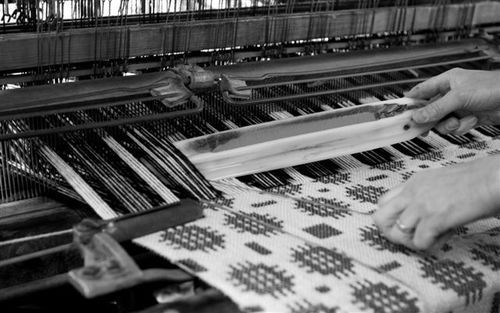
“The shuttle in our Tools of the Trade picture is probably 35 years old and is brand new – one of our spares! We now use nylon versions of these shuttles which became available in the 1950s and are more robust than the older wooden versions. We still use a pair of nylon shuttles that Tom fitted to a loom when his family bought the mill in 1986!”

And what is the wooden tool on the top left? “Aha that’s no wooden tool! It’s an old buffalo hide picker hence why it’s not on the loom anymore - it’s worn out!! It slides backwards and forwards at the end of the loom throwing and catching the shuttle. Made from riveted buffalo hide, the modern equivalents are now made from nylon.”
We have come across the Dobcross before in Tools of the Trade, in March, when we paid a visit to Elvet Woollen Mill. This machine is the perfect loom for weaving the traditional Caernafon ‘Welsh Tapestry’ pattern that has seen such a resurgence in popularity over the past few years.
“The Tapestry design is the oldest pattern we weave here and was adapted from one of the traditional Welsh bedspread patterns. The rugs and runners woven here were originally of a much simpler design, but in the 1950s Eric noticed how many people had been using the tapestry blankets on their floors, and so he adapted the design using heavier yarn to produce a tapestry rug."
Our Tapestry Rugs are available in our own Labour and Wait Airforce and Olive colours, as well as as in standard Black and Red colourways. The rugs are 'double cloth’, being two layers of cloth woven together, making them weighty and durable as well as fully reversible. Solva use 100% British wool, spun by a family company in Yorkshire.

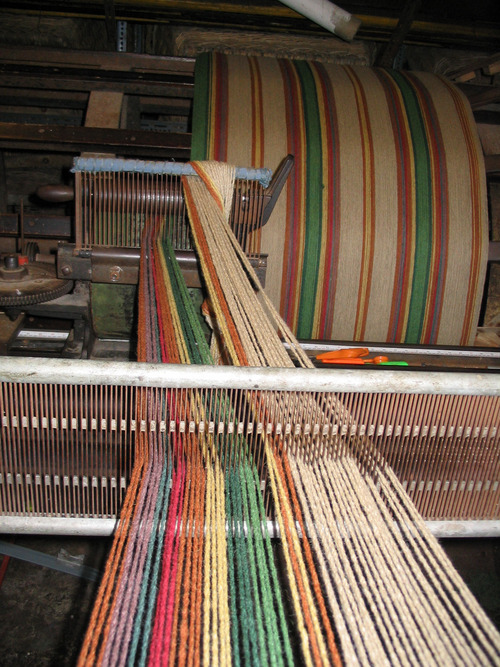
"The Cats are an integral part of the mill team as they patrol the mill deterring unwanted guests!!”

There were once 26 mills in Pembrokeshire; now Solva is one of only two. Anna and Tom feel proud to maintain the family history that is so closely entwined with the mill: “For my part being able to carry on the family owned tradition with Tom is of huge importance. Breathing new life into the mill and encouraging visitors to appreciate the importance of heritage is one of my reasons for enjoying owning a mill.”
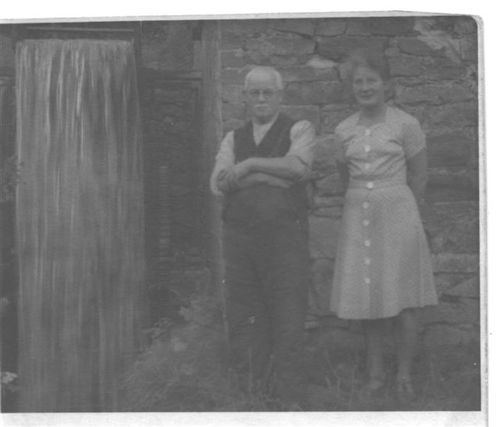
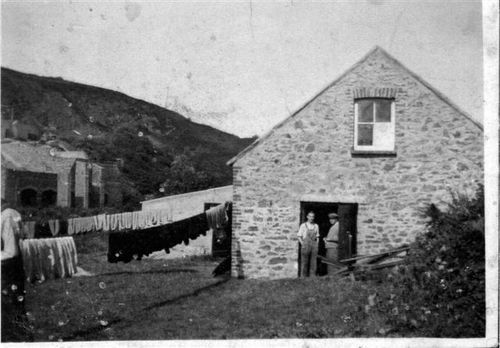
We are very pleased to be able to sell these handsome Tapestry Rugs, woven by Tom and Anna in their Welsh mill. In doing so we feel we are playing our part in preserving a traditional industry, one that has been practiced in this mill for over a hundred years, and which will keep on going for many years yet.

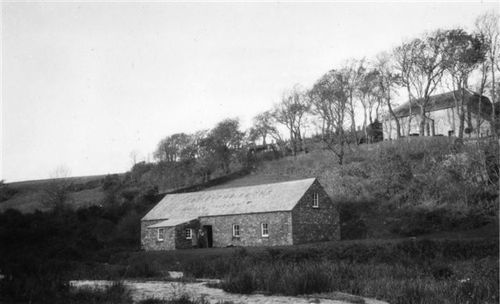
Our thanks also go to all our suppliers who have shared their tools and their stories with us this year. We hope to have shown a little of the companies still proudly making their goods in Britain, many in a traditional manner, all of which we are honoured to sell at Labour and Wait.

A friendly farmer sold a collection of chainsaws and farmyard tools to a friend. Unfortunately, that friend didn’t have the cash to pay for said tools, so he traded them for his stash of unsold Swiss Army Knives from the early 1960’s.
That farmer kept hold of those knives for a good few years before contacting us here at Labour and Wait, with a view to selling them. Needless to say it didn’t take us long to gleefully take him up on his offer.
We are delighted to introduce our very limited stock of collectable Swiss Army Knives in our Redchurch Street store.
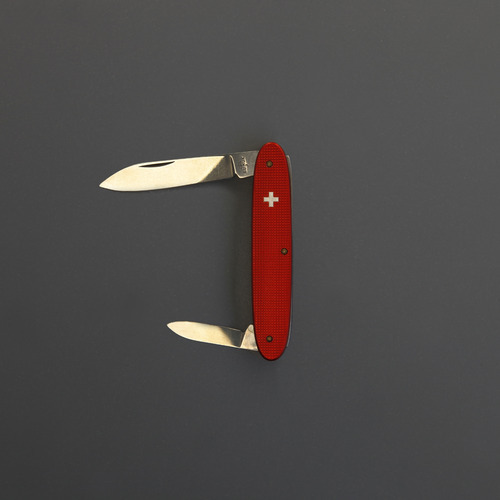
The 1960’s ‘Popular’ penknife.

The 1960’s 'Camper’ penknife.
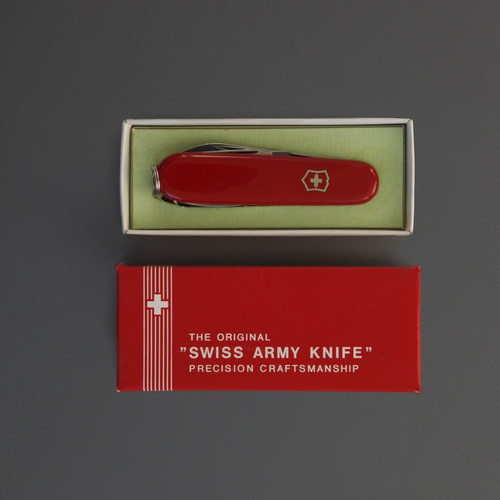
The 1960’s 'Tinker’ penknife.

Rare 1960’s Pioneer penknife
 SOLVA WOOLLEN MILL was established in 1907. It is the only mill in Wales specialising in flat weave carpets, rugs and runners. This family business still uses traditional weaving skills and original 19th century looms. Amongst many prestigious commissions they are proud to have supplied the Landmark Trust for many years.
SOLVA WOOLLEN MILL was established in 1907. It is the only mill in Wales specialising in flat weave carpets, rugs and runners. This family business still uses traditional weaving skills and original 19th century looms. Amongst many prestigious commissions they are proud to have supplied the Landmark Trust for many years.
 SMITHS TRUGS are makers of the Sussex Trug, which was first created in the 1820s. This lightweight garden market is made using sweet chestnut and cricket bat willow. To this day each trug is completely hand-made using the same traditional methods and personally signed by the maker.
SMITHS TRUGS are makers of the Sussex Trug, which was first created in the 1820s. This lightweight garden market is made using sweet chestnut and cricket bat willow. To this day each trug is completely hand-made using the same traditional methods and personally signed by the maker.
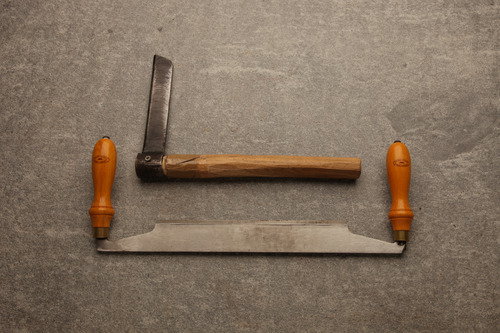
November’s Tools of the Trade come to us from the village of Hurstmonceux, home to The Royal Sussex Trug Company. For nearly two hundred years this small village on the high weald has been home to generations of trug makers, crafting their willow and chestnut baskets in the same manner as Thomas Smith, the original Sussex Trug maker.

The traditional ‘trog’ had been used since Anglo Saxon times for storing and measuring grains and liquids, but these medieval vessels were made with solid timber and were heavy and cumbersome. Thomas Smith reinvented the trog as the trug, using Sweet Chestnut and Willow to make a basket which was light yet strong. There was an immediate demand for Smith’s trugs, and he quickly set up a workshop to supply the demand from houses and gardens throughout the country.
But it was the 1851 Great Exhibition that made the Sussex trug famous. Queen Victoria saw Thomas’s trugs and ordered some as gifts for members of the Royal Family. Thomas made the trugs personally and and then he and his brother walked the 60 miles from Sussex to Buckingham Palace to deliver them. The Queen was suitably impressed and bestowed her Royal Warrant on Smith - hence the Royal Sussex Trug.
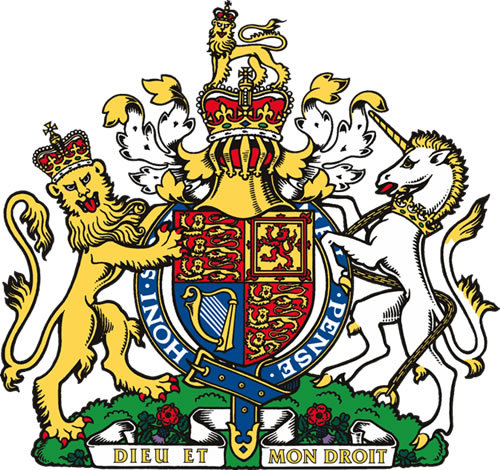
There are a handful of trug makers still based in Sussex, but only one can trace its descent from Thomas Smith and the original Royal Sussex Trug. Robin Tuppen, proprietor of the Thomas Smith Trug Shop explains the tools and the process involved in the manufacture of a trug:
“The two tools we supplied were a draw knife and a cleaving axe (also known as a froe). The cleaving axe is used to split the chestnut that we use to make the handles and rims of the Royal Sussex Traditional Trugs.”
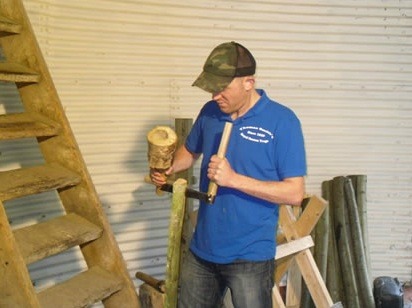
“The Cleaver uses a special axe, which is placed on top of the Sweet Chestnut pole (also known as a cooper pole or a Trug Bat) and this is hammered in with a wooden maul (also made of Chestnut). He then works the axe through the length of the pole, using the natural grain of the wood to split it in two. These halves are then cleaved again to produce smaller sizes which then go on for shaving as handles and half rims.”
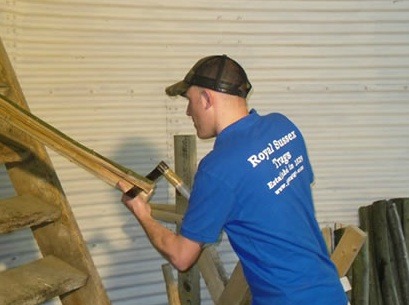
“The Royal Sussex Trug handles and rims are shaved by the Craftsman on a “Shaving Horse”. The draw knife is used to shave them down to the correct thickness and width.“
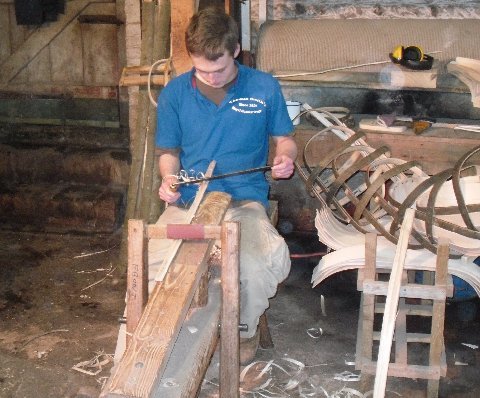
"There are many different shapes and sizes to remember and the Craftsman has to do all this work by eye alone. The wood is then ready for steaming.”
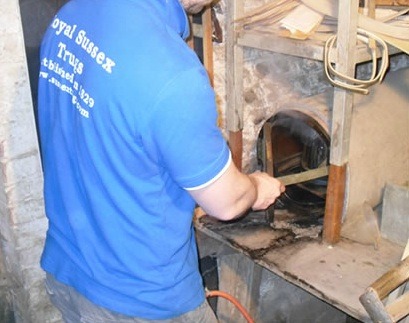
“Any wood left over from the making process is burned on a wood fired boiler to raise steam to soften the chestnut for bending. We use our wood to fire our boilers because, when wood is burned, it gives off no more carbon dioxide than the tree from which it came absorbed during its lifetime. Truly carbon neutral! The chestnut is placed into the steamer, around which steam circulates freely (not under pressure), thus making the Chestnut pliable. It is then bent round the “former” to make the handle or rim.”
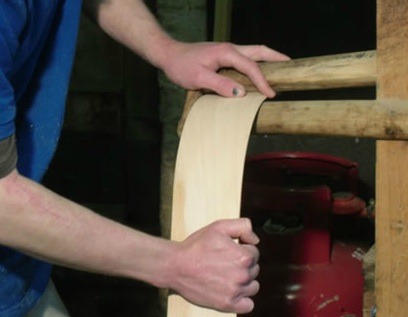
“The Craftsman has only a few seconds to do this before the wood becomes stiff once again, so he has to be quick as well as skilled. The handles and rims are then nailed together to make the “frames”, which are then sent to the Maker to have the boards placed inside them.
"Assembling the trug is done sitting on a “Making Horse”. The Craftsman receives the frame and fixes the boards into it. The boards, made from re-cycled Cricket Bat Willow are also steamed and are then bent on the ends in the Steam Shop before being sent to the Maker. This makes them springy and stops them splitting when they are shaped within the frame. The boards are placed inside the frame and fixed securely into position using solid copper tacks.”
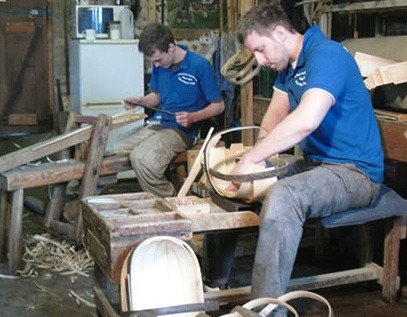
“Once the Trug is made, the legs are nailed on to the bottom and the Trug is then ready to go for the final quality inspection before being signed by the craftsman, stamped and given a unique reference number on the bottom before being despatched.”

Robin and his team make over 100 different shapes and sizes of trug, and their uses are limited only by your imagination. Our trug, however, is the perfect size for use in the home or garden - and it has the all-important stamp and signature on the bottom, proving that it is the original Royal Sussex Trug.
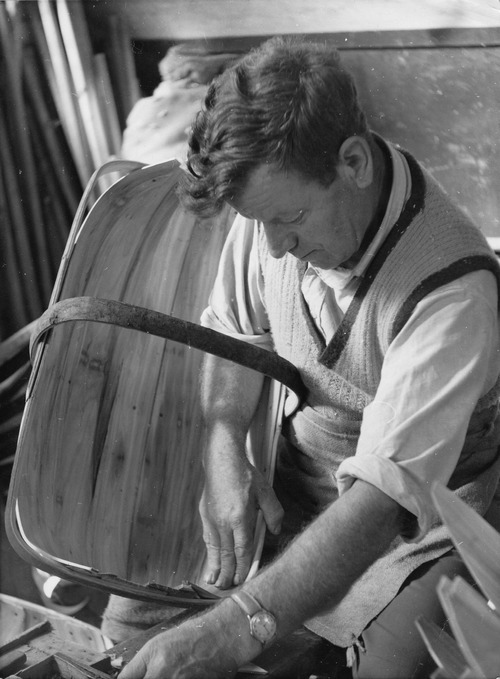
Albert Jenner making a trug for R.W Rich, another local manufacturer of Sussex trugs.
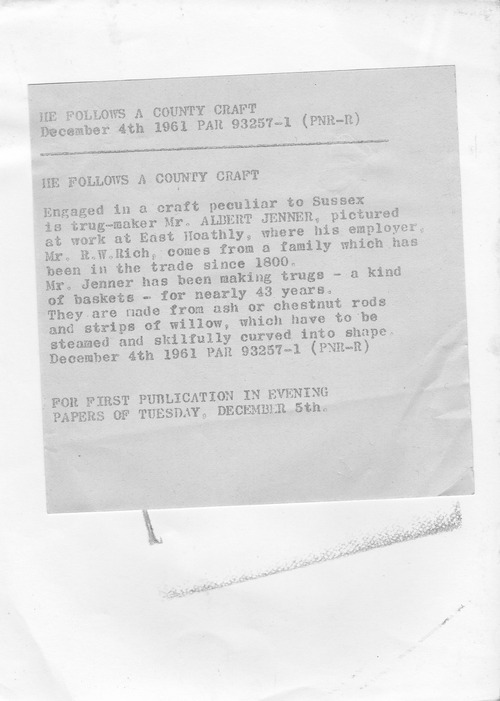
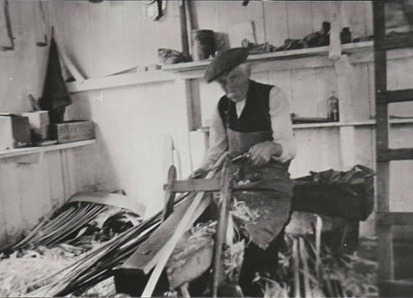
Bill Dooley sat on his making horse, shaving the chestnut with his draw knife.

Eddie Smith, last of the Smith owners.
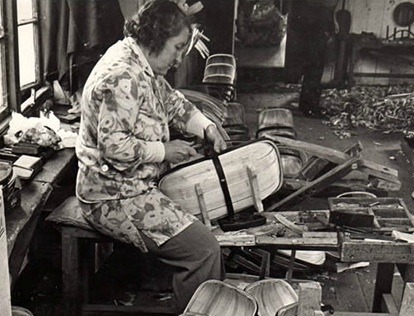
Hazel Pilbeam finishing a Royal Sussex Trug.

Our thanks to Robin and all at the Thomas Smith Trug shop for their photographs and information. Sussex Trugs are available online and in store now.
Our Tools of the Trade tour of Britain continues in Lancashire. Here, nestled in between the Yorkshire Dales and the Lake District National Park lies Holme Mills and the factory of Abbeyhorn, bone and horn carvers for over 250 years.

Two of our perennial Labour and Wait bestseller are from Abbeyhorn; our Horn Egg Spoon and our Horn Comb:
Abbeyhorn can trace their history back to 1749 and the Humpherson Hornworks in Bewdley, Worcestershire, “Manufacturers of Foresters’, Holster, Drenching and Powder Horns and Flasks” as well as “all kinds of Combs, Shoe Lifts, Scoops, and Spoons, Salt Cellars, Pepper and Tobacco Boxes, Lanthorn Leaves, &c., &c.”
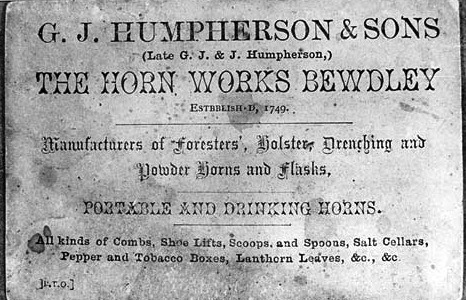
The use of horn as raw material or tool extends much further back than the 18th Century, though, and so we must start this month’s blog with a brief historical and archaeological discursion. The use of animal horn by mankind must be as ancient as our use of any tool. Our distant ancestors were thrifty in making use of every part of an animal, and the horn would have been no exception; many antique civilisations used animal horns as calling or musical instruments - and we still use the word ‘horn’ as synonym for brass instruments such as the trumpet today - while their shape and constitution made them perfect for carrying goods or liquids. Drinking horns were in use throughout Europe by the Iron Age and Julius Caesar later described the much sought-after 'Gaulish horn’ being used at great feasts as a drinking vessel. Horn artefacts have been discovered amongst the treasures of Sutton Hoo, and the Taplow Horn ( below ) was one of five cow’s horn drinking vessels discovered in the burial mound of a Saxon Chieftain.
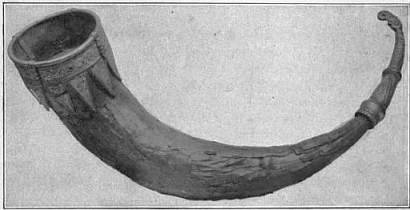
But it was not just the natural shape of the horn which made it so useful. Heating the horn allowed it to be shaped and moulded, and as it cooled it retained its new form. This meant that horn could be used for many new purposes and over the centuries hornworking techniques such as heating, pressing, splitting, filing and moulding came to be refined and perfected. And so, by the time of Humpherson and Sons, horn was being made into combs, pipes, scoops and spoons, boxes of all size and purpose, spectacle frames, brush handles, lantern leaves and many, many other functional and useful items. It is no wonder horn is now known as the plastic of the Middle Ages.
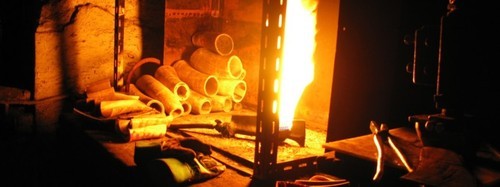
Abbeyhorn still use these traditional processes to make many of their products today. The horn is heated, bent, and set, and sanded, polished and buffed, all by hand and all by their skilled workers.
Now we normally hope to visit the factories ourselves to take pictures and explain the manufacturing process, but we were unable to visit Abbeyhorn on this occasion. Luckily for us, however, Adam Thompson - writer of the fascinating Manufacture & Industry blog - took a trip to Lancashire recently, and he has kindly allowed us to use his pictures. And so we can follow the manufacturing journey, from animal horn to egg spoon.
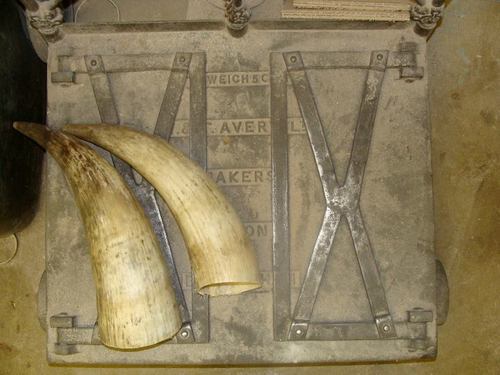
The raw material comes from Africa, where the horns are a by-product of the Nigerian beef industry - domestic British cattle have long had their horns bred out of them.
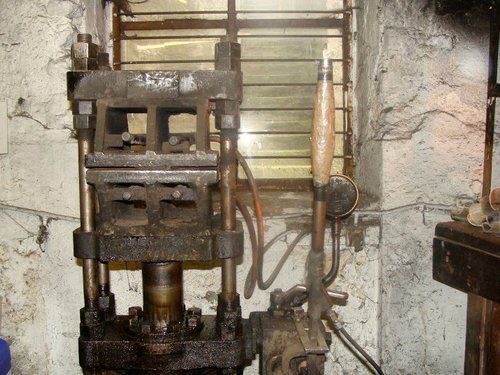
The horn is then flattened in a pressing machine before the blanks are die cut. Our calendar picture shows the spoon die, a flattened sheet of horn and the two stamped spoon blanks.


The blanks are then ready for sanding.
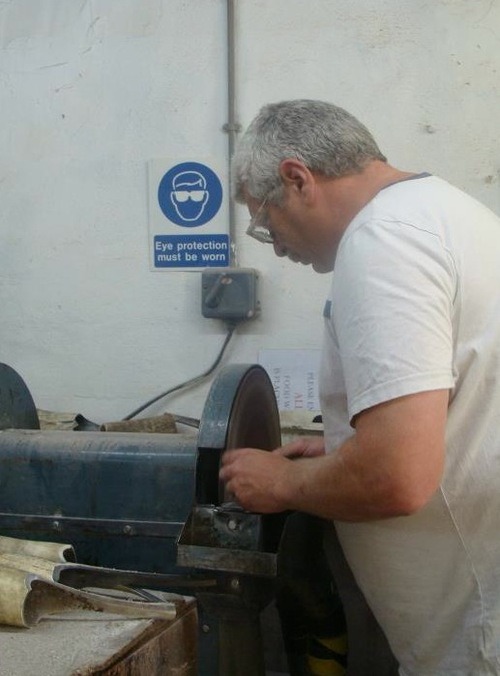
Hornworker Graham sanding the blanks. Graham has been with Abbeyhorn for over 30 years.

Spoon blanks ready to be heated and moulded - and some comb blanks ready to have their teeth cut.

For heating small items such as spoons Abbeyhorn use a deep fat fryer. It is a delicate process though; underheat them and they won’t retain their new shape, overheat them and the horn is ruined.
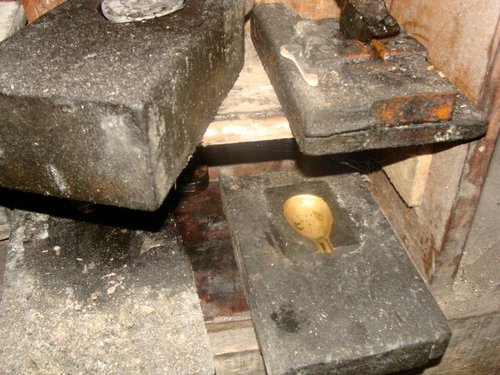
The warm spoon blank is sat in its mould and then pressed into shape.
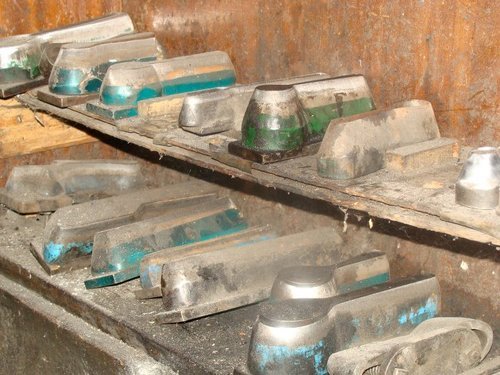
The moulds of various shapes and sizes are produced by another local company.
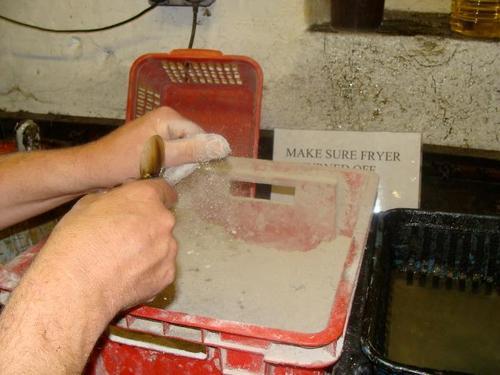
Once the bowl of the spoon has been shaped it is dipped in dust to remove any excess grease, and then it is ready to be buffed to a shine.
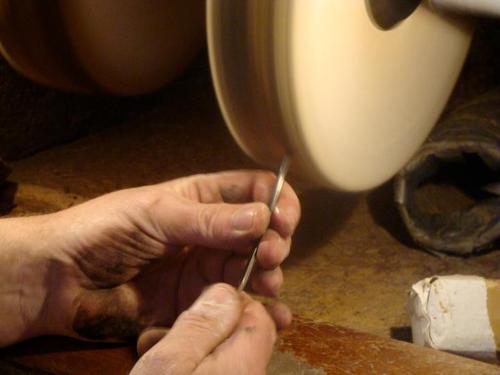
The finished product. Each horn will have its own particular colouring and pattern, meaning every item will be unique - no two spoons will ever be alike. Colours can range from solid black to completely translucent, with every shade and stripe inbetween. These spoons are incredibly beautiful tactile objects, and provide a little bit of luxury to everyday life - we can assure you that there is no finer way to eat a boiled egg than with a horn spoon!
The horn comb is made using a similar process. Horn makes a perfect choice for a comb, as hair and horn are essentially the same material - keratin. A horn comb will thus be kinder and more comfortable to your hair than a plastic comb, and will help keep your hair nourished, healthy, sleek and shiny.

Abbeyhorn is currently in the safe hands of The Cleasby Family, the fifth owners in the company’s long history. From its base on the borders of the Lake District Paul Cleasby and his small team of co-workers continue to hand craft their horn, bone and antler -wares in the same way as all those generations of hornworkers before them.
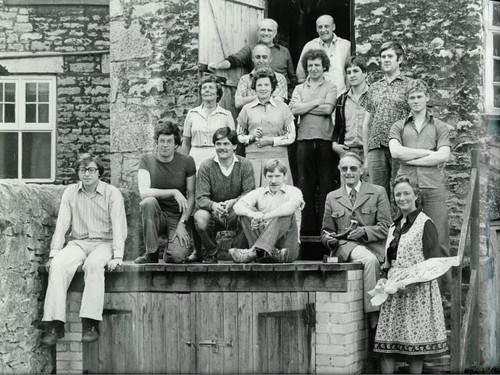

Many thanks to all at Abbeyhorn for sharing their tools with us, and thanks again to Adam at Manufacture & Industry for the use of his pictures.
Horn Egg Spoons and Combs are available at the Labour and Wait shops in Redchurch Street, Dover Street Market, and from our website.
 ABBEYHORN can trace its history back to 1749. This family run business produces traditional horn products from a variety of ethically sourced raw materials mainly by-products of the meat industry. Every item is unique, bearing its own distinctive markings.
ABBEYHORN can trace its history back to 1749. This family run business produces traditional horn products from a variety of ethically sourced raw materials mainly by-products of the meat industry. Every item is unique, bearing its own distinctive markings.
Our Tools of the Trade calendar 2013 has so far taken us to Suffolk, Norfolk, Sussex, The Cotswolds, Shropshire, Wales, the West Midlands and London ( twice ). September sees us arrive in Tunstall, Staffordshire - home of Cauldon Ceramics, makers of our Brown Betty teapot.

Tunstall is one of the six towns which form Stoke-on-Trent, colloquially known as ‘The Potteries’.
The local abundance of clays and the easy access to coal made Tunstall, along with Fenton, Hanley, Burslem, Longton and Stoke the perfect location for a rapidly expanding ceramic industry, with local names like Spode, Doulton, Wedgewood and Minton establishing their manufactories in the area. Throughout the nineteenth and twentieth centuries the growing industrialisation of the manufacturing process lead to the establishment of Stoke-on-Trent as one of Britain’s industrial heartlands, creating products to be sold throughout the country, the Empire and beyond.

But while Wedgewood, Doulton and Spode were looking to refine their china clays and porcelains to cater to the booming middle class, the local red clay of Tunstall was perfect for manufacturing cheap and durable domestic ware, and, in particular, teapots; the clay retaining the heat and the large rounded shape allowing the tea room to brew to perfection. This simple, functional pot became known as the Brown Betty.
Cauldon’s Brown Bettys are made in the traditional slipcast manner where slip - a clay and water mix - is poured into plaster moulds. As the plaster absorbs the water from the slip the clay forms and hardens inside the mould. After the slip has been inside for a certain amount of time it is poured out, leaving a thin layer of clay - in this instance in the shape of a teapot.

Moulds ready for filling with slip.

Factory owner Zamir overseeing the filling process.

Filled moulds waiting to be emptied - the amount of time the slip is left in the mould before emptying determines the thickness of the finished pot. Too short and the pot will be brittle and breakable, too long and it will be heavy and ungainly.
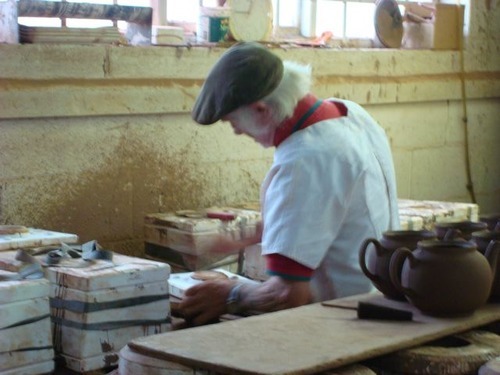
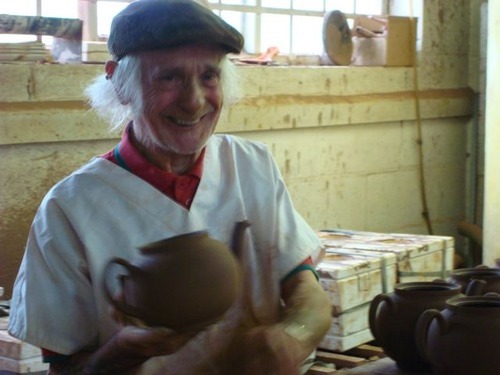
The moulds are opened and the leather-hard pots are removed. The raw pots will have moulded seam marks on them, so require trimming or 'fettling’ to ensure a smooth finish.
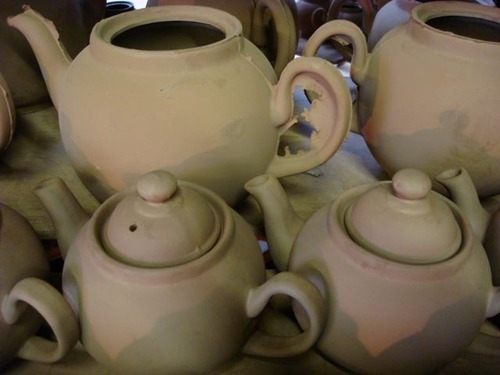
Fettled and unfettled pots.
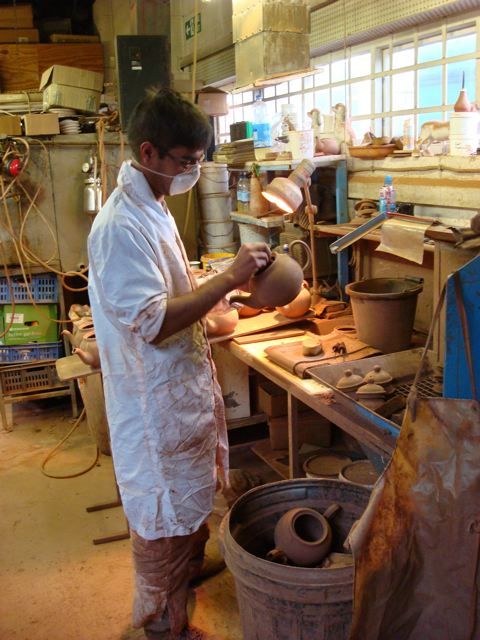
Like all processes in the making of a Brown Betty, the fettling is performed by hand.
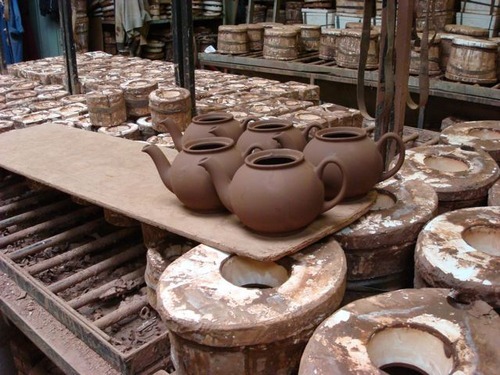
The finished pots waiting to be fired. The red clay of the Brown Betty gives the pot its distinctive look ( and its distinctive name ).
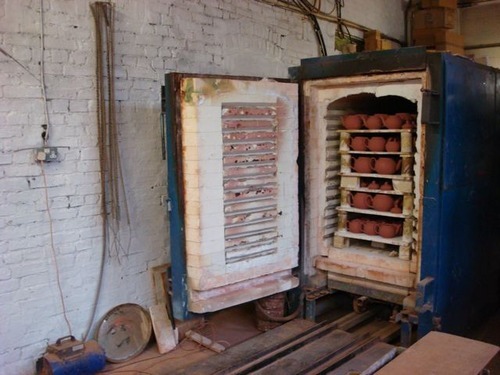
The kiln loaded and ready for firing.
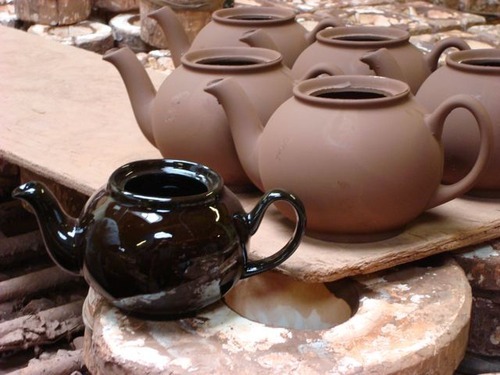
As the clay pot is dried and fired it shrinks in size, by a factor of up to one tenth. Here, a fired Betty is seen next to an unfired pot to illustrate the shrinkage.
The final step in the process is the glazing, where a decorative and protective natural coating is fired onto the bare clay at high temperature. The traditional Brown Betty finish used a Rockingham Glaze to produce a deep, dark, rich brown colour.
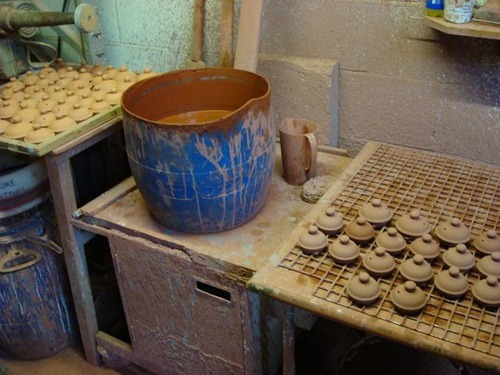
Teapot lids waiting for their dip in the glaze.
Many modern versions of the Brown Betty, however, use a somewhat flat and lifeless brown glaze so from this year we will be selling a clear glaze version of the Brown Betty.
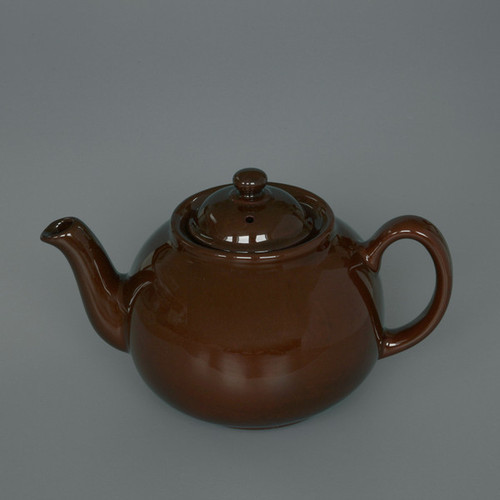
Not only does this show off the natural colour of the clay, returning the Brown Betty to the natural, lighter shade that is seen in many vintage examples, but it ensures that any teapot bought from Labour and Wait will stand out as a unique item.
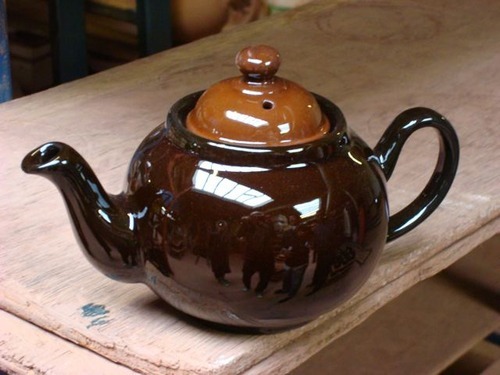
The clear glaze of the lid contrasts with the darker Rockingham of the teapot body.
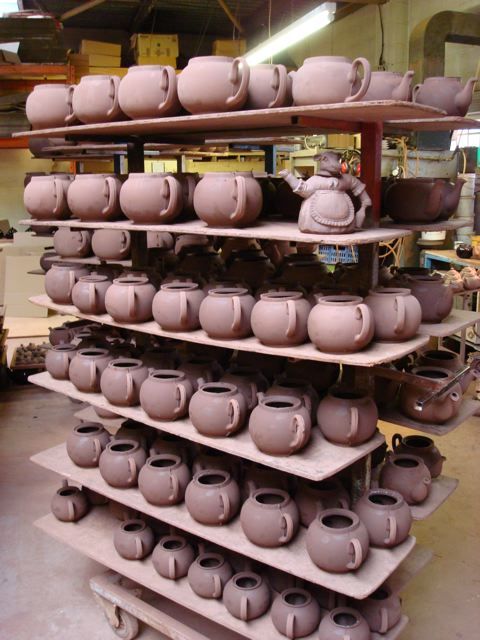
The functional and utilitarian nature of the Brown Betty has ensured its popularity from generation to generation, and so how pleasing it is to know that they are still being made by hand in Stoke-on-Trent to this day.

The Brown Betty Teapot in a clear glaze is available in 2, 6 and 8 cup versions from the Labour and Wait shop or online.


Our London Design Festival exhibition is up and our Heritage ‘Ball’ Jars are now available to buy!
Visit our Redchurch Street store to take a look or if you can’t make it down the Jars are now available to buy online.
 CAULDON CERAMICS is situated in Stoke-on-Trent, where the original Brown Betty teapots were produced at the end of the 17th century. The teapot takes its name from the distinctive brown clay from this area. Each teapot is handmade by a small but skilled workforce.
CAULDON CERAMICS is situated in Stoke-on-Trent, where the original Brown Betty teapots were produced at the end of the 17th century. The teapot takes its name from the distinctive brown clay from this area. Each teapot is handmade by a small but skilled workforce.
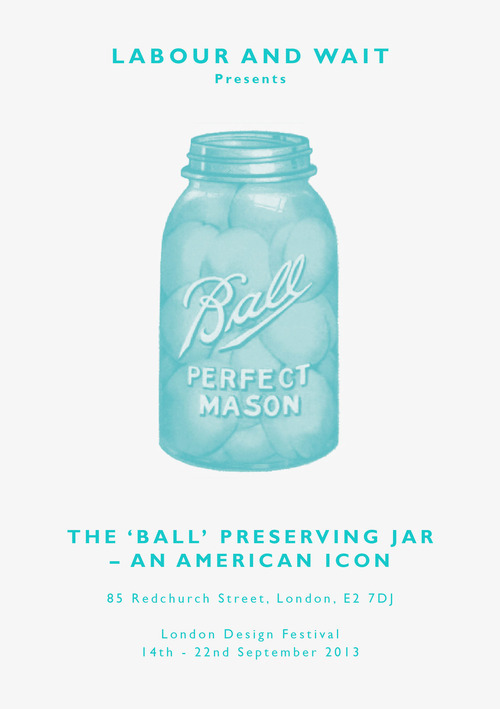
In celebration of the 100th anniversary of the first true ‘Perfect Mason’ jar, Ball have issued a limited edition Pint jar in the iconic aqua blue glass.
These Jars will be available in store and on our website from Design Week onwards.
For more information -
Icon Design Trail
Shoreditch Design Triangle

August, and our Tools of the Trade tour brings us to Suffolk, home of Footrope Knots and Des Pawson MBE.
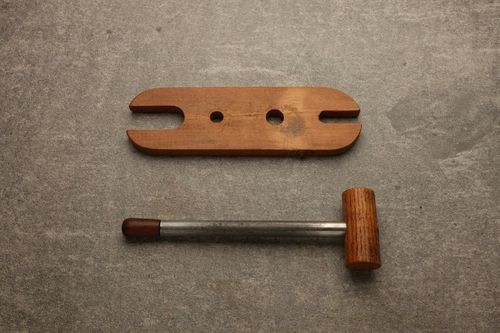
From his workshop, and with the assistance of his wife Liz, Des makes our Rope Doorstop, Rope Keyring and Sailor’s Whisk Brush.
A founding member of the International Guild of Knot Tyers, Des is known and respected the world over for his knowledge of knotting and ropework, and his enthusiasm and expertise sees him in demand at festivals and boat shows throughout the country. With his bright red cap and bushy beard Des is a popular and instantly recognisable figure, whether demonstrating ropemaking, or tying keyrings, bellropes or fenders. For his Tools of the Trade Des chose to share with us his Heaving Board and Heaving Mallet.

These tools are used in tensioning rope to ensure the tightest knot; essential in the making of a Monkey’s Fist. Traditionally used to weight the end of a line, allowing it to be thrown, the elegant interlinking rings of the Monkey’s Fist make it an attractive ornamental knot, and the perfect form for our doorstop and keyring.

Des explains his tools for us: “I cannot recall exactly how old the heaving board is but it is based on one I saw used by a rigger on the Cutty Sark a good few years ago. It is made from a piece of beech that I found floating in the river Orwell, although it has been broken and repaired once.”
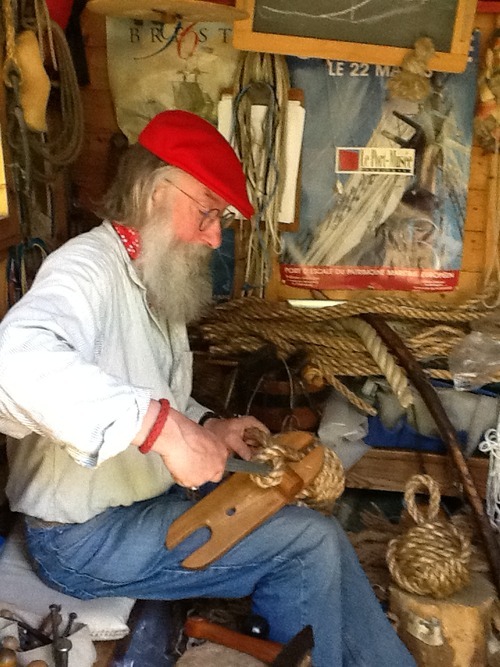

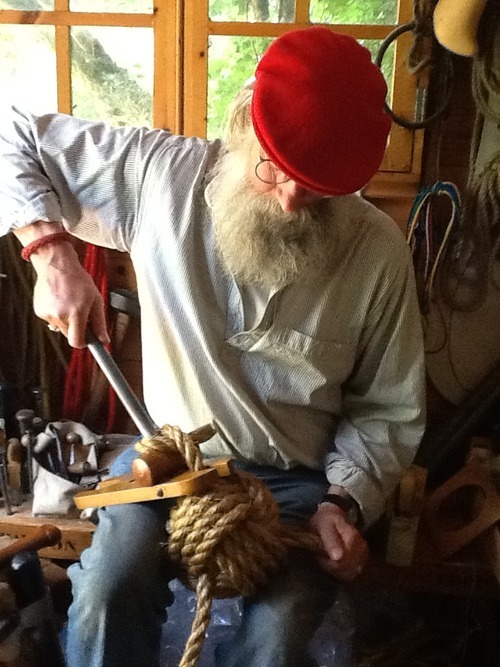
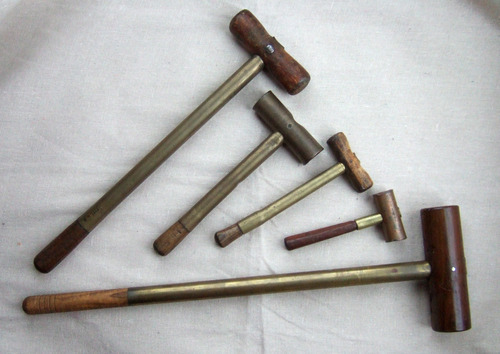
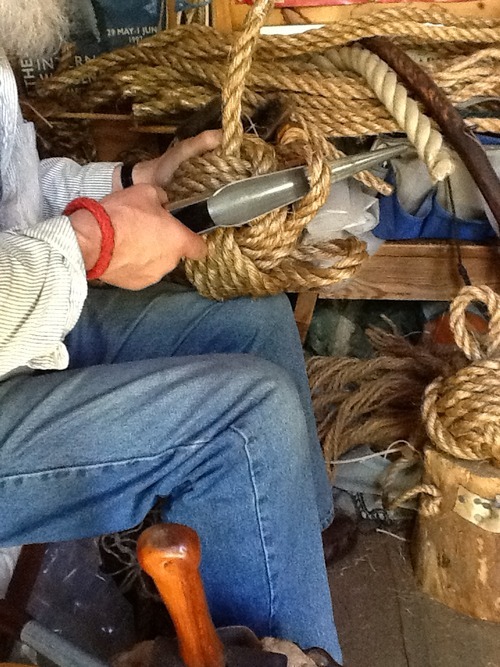
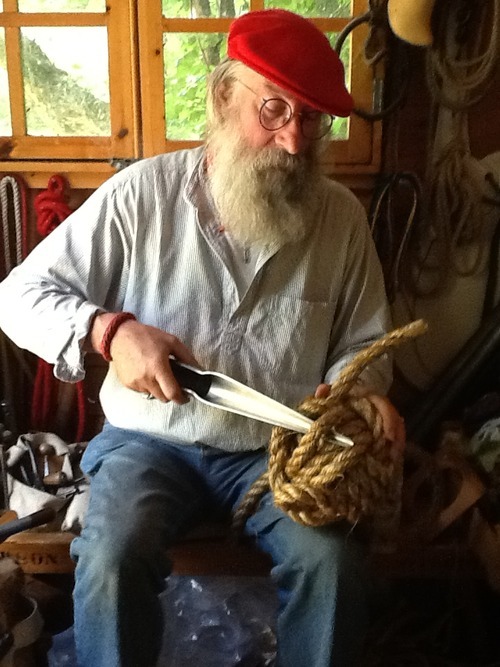



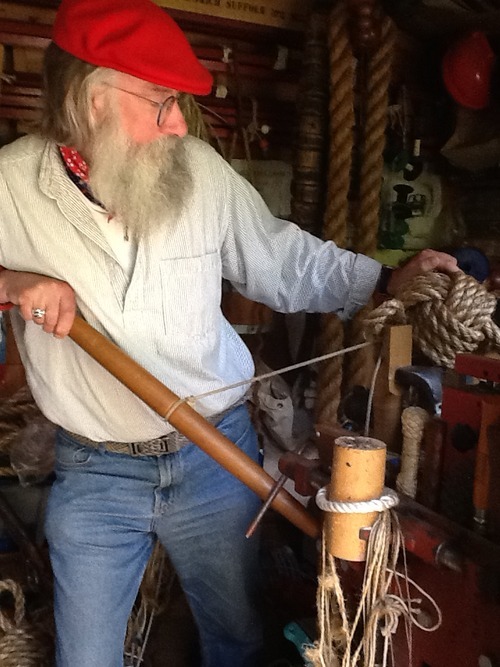

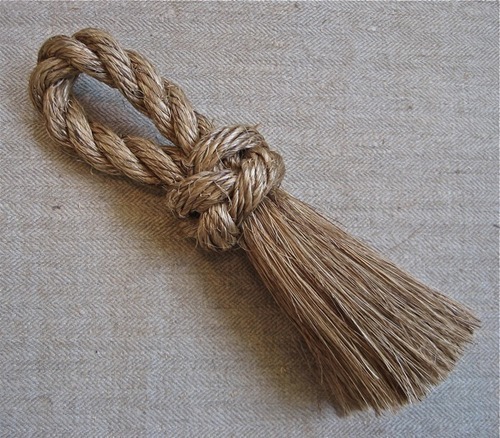
Made by sailors from odd ends of rope, this brush was used for swabbing a boat’s deck, although our smaller version is perfect for brushing down your table or worktop. Although simple looking, this brush is very labour intensive, as straightening the strands to produce the distinctive ‘whisk’ involves controlled soaking, combing and drying. Available in limited quantities, this is a great alternative to a dustpan brush, and is a classic Labour and Wait product - timeless and functional.
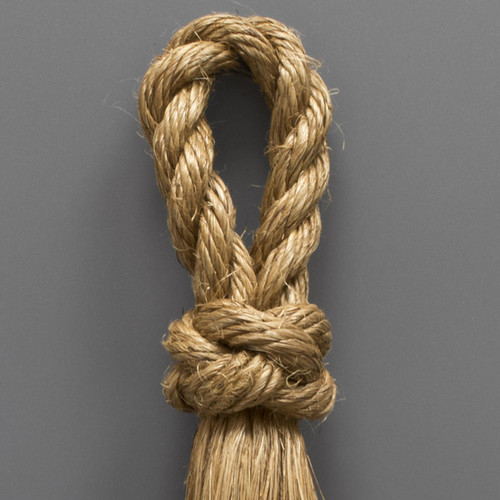
As well as making rope products and demonstrating knot tying, Des also runs the Museum of Knots and Sailor’s Ropework. A valuable resource of rope artefacts and knot tying history, Des’s tribute to the art of the ropemaker is a unique collection celebrating the prosaic and practical skill, once commonplace, which is now the province of the specialist.
“We believe that the world should recognise the art and skill of knots and sailors’ ropework. Such items that have often not been valued or exhibited by museums. For many years we have collected old and recent ropework and ropeworking tools. We hope to encourage greater awareness by creating this setting to properly display our collection.”
